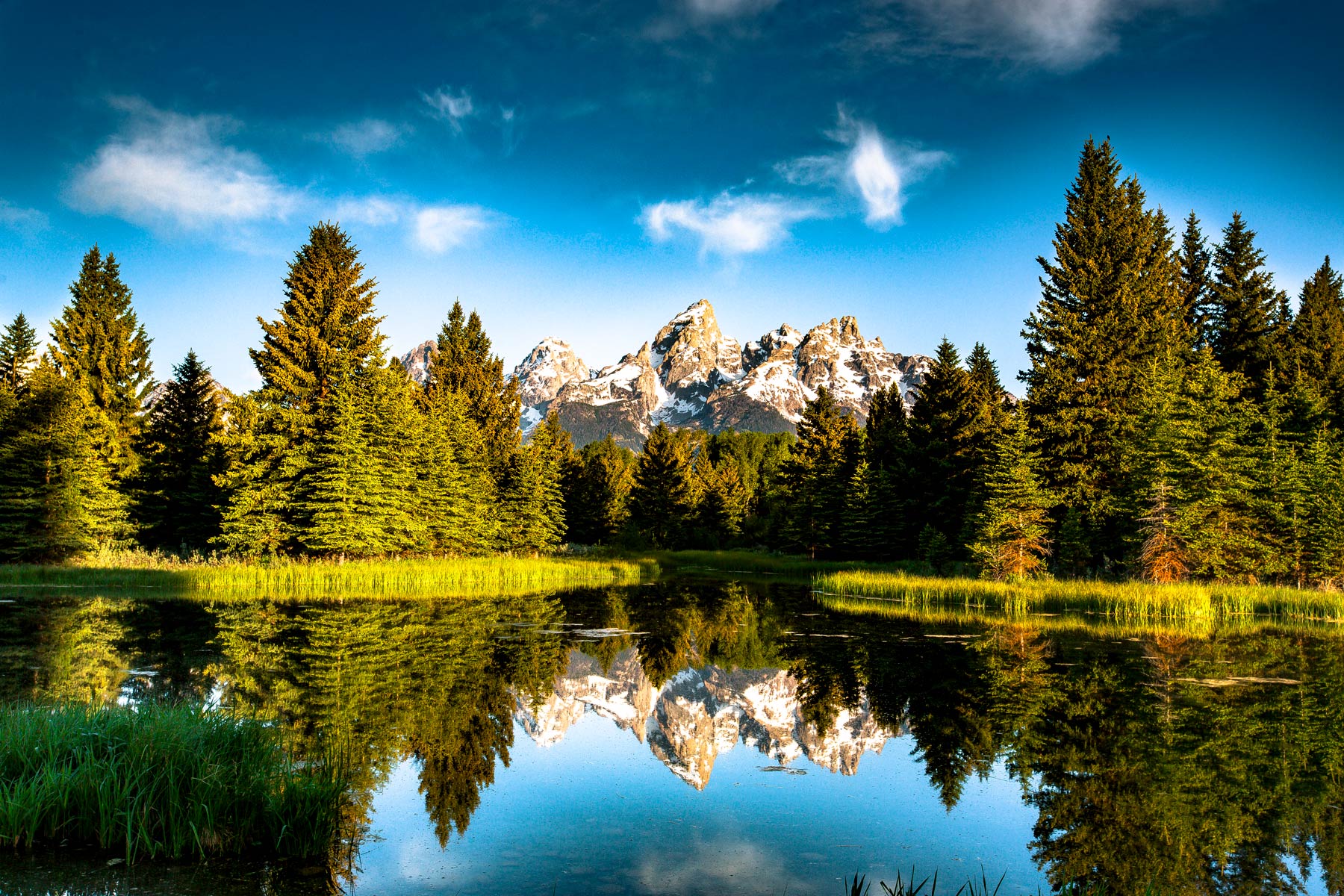
Article Summary: Wyoming National Parks
Wyoming National Parks! We’ve got ten incredible national park sites for you to see on your next visit to the Cowboy state.
More Than Just Parks has spent an incredible amount of time in Wyoming’s National Parks.
The film we created on Grand Teton National Park is an award-winner viewed over a million times around the world!
Wyoming is home to the oldest national park in America as well as some of the most beautiful on the planet.
Last year one of Wyoming’s national parks was ranked the second best in the country.
Wyoming National Parks has fascinating historic sites, amazing national monuments, incredible historic trails, 2 great national parks and more.
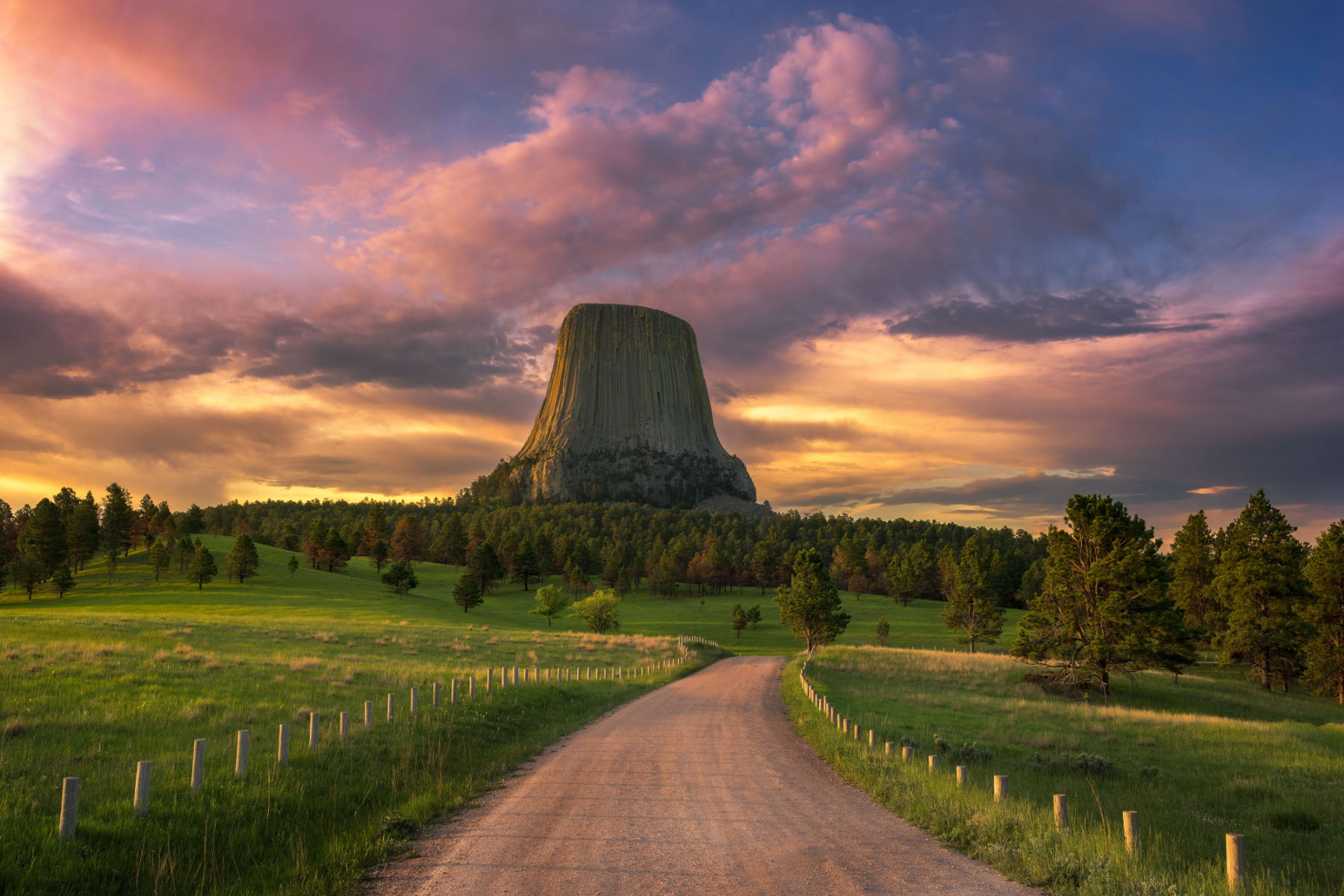
So, What Is A National Park?
We get asked that question a lot because there’s a difference between a “national park” and a “national park site.” To help you understand that difference you might want to check out our article titled: What Is A National Park Really?
If you’re planning a trip to the Cowboy State then one book that I highly recommend is: GREATER THAN A TOURIST- WYOMING USA: 50 Travel Tips from a Local by Sara Rigsby.
We’re going to give you ten reasons why you’ll want to make Wyoming your next vacation destination.
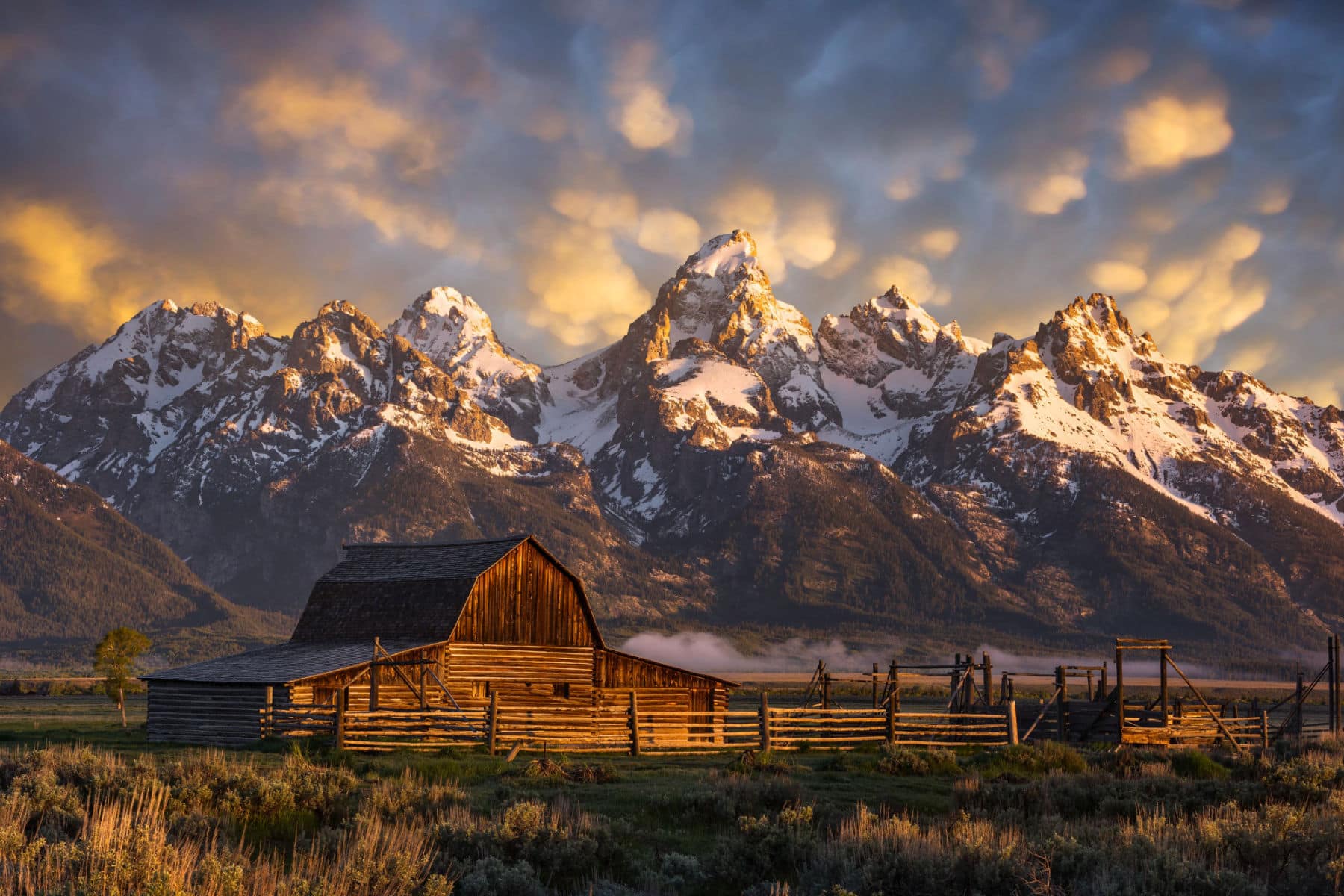
Table Of Contents: Wyoming National Parks
Wyoming National Parks
1. Grand Teton National Park
Wyoming National Parks includes some of the most magnificent national parks in the world. And that having been said, Grand Teton National Park is one of our all time favorites.
We first visited Grand Teton National Park back in 2016 and have been back many, many times since.
Grand Teton is truly one of those places that anywhere you look seems to be postcard worthy. Be sure to bring your camera.
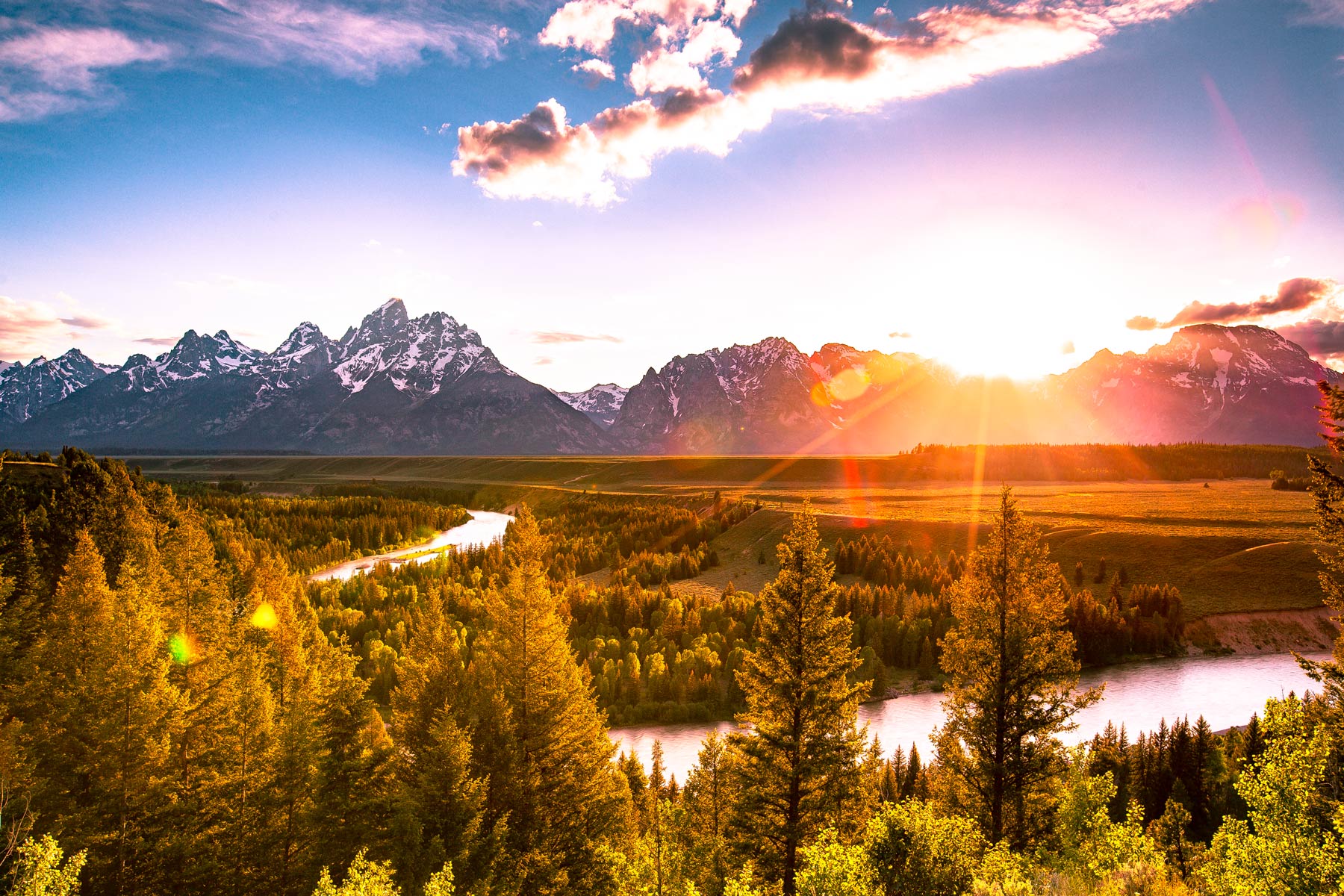
Grand Teton Is A Family Affair
In recent years, the park has seen a massive influx in folks (like the Pattiz Family) who want to get a glimpse of this breathtaking destination. Who can blame us! In 2016, all four of us managed to make the trek. It’s one amazing trip that I will certainly never forget.
However, one question we’ve been getting asked more and more lately is “is it still worth it to visit Grand Teton despite the crowds?”
The answer is, yes. It just requires a bit more due diligence and planning these days to have the best possible time at the park.
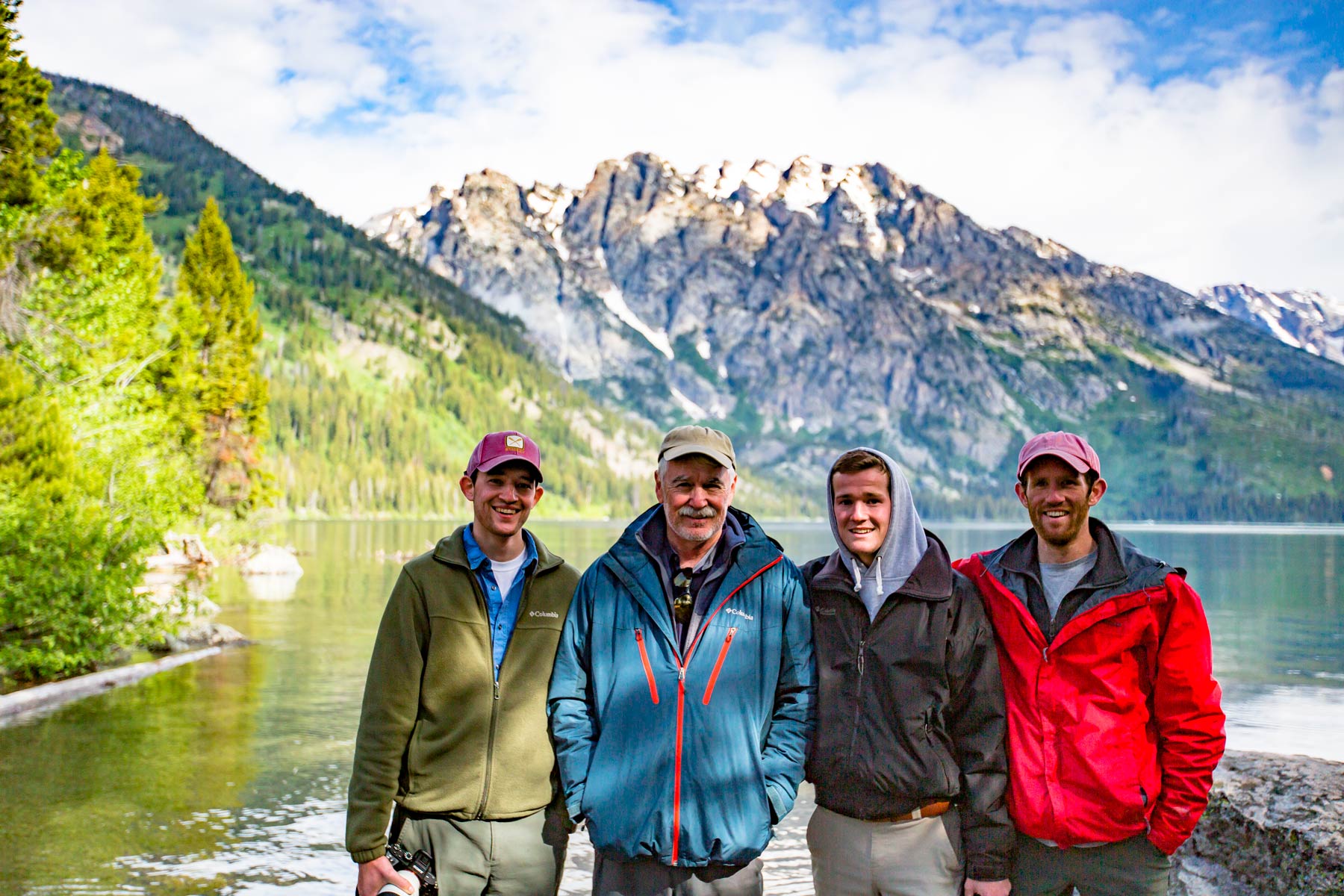
About Grand Teton National Park
Located in the spectacular Jackson Hole Valley and encompassing nearly 500 square miles, Grand Teton National Park boasts an awe-inspiring array of pristine wilderness, glacial lakes, winding rivers, diverse wildlife, and the magnificent Teton Range.
This is a land dominated by towering peaks, apex predators, and majestic mountain beauty.
The park derives it’s name from the mighty Teton Range popularly known as simply the Tetons, or the Grand Tetons.
The park’s creation and eventual scale (in terms of acreage) was largely made possible by John D. Rockefeller Jr., son of the famous oil tycoon.
Grand Teton National Park Video
GRAND TETON 8K is the culmination of nearly a month spent filming in the spectacular Jackson Hole Valley and the foothills of the Teton Mountain Range.
Encompassing nearly 500 square miles, Grand Teton National Park boasts an awe-inspiring array of pristine wilderness, glacial lakes, winding rivers, diverse wildlife, and the magnificent Teton Range.
RELATED: 14 BREATHTAKING National Park Videos to Inspire Your Next Trip
Things To Do At Grand Teton National Park
Here are some things to do while visiting:
- Hiking: Grand Teton has over 200 miles of hiking trails. Some of the most popular hikes include Cascade Canyon Trail, Taggart Lake Trail, and Jenny Lake Trail.
- Scenic drives: The park has a 42-mile scenic drive that takes you through breathtaking landscapes, such as Signal Mountain, Snake River Overlook, and Jackson Lake.
- Wildlife viewing: Grand Teton is home to a variety of wildlife, including bison, elk, moose, grizzly bears, and wolves. Visitors can take guided tours or explore on their own.
- Boating: Visitors can rent a boat or take a guided tour of Jackson Lake or Jenny Lake.
- Fishing: Grand Teton has over 300 lakes and streams, making it a great destination for fishing enthusiasts. Visitors must have a valid fishing license to fish in the park.
- Photography: Grand Teton’s natural beauty makes it a perfect destination for photography. Visitors can capture stunning mountain vistas, wildlife, and colorful sunsets.
- Camping: There are several campgrounds in the park that offer a range of camping experiences, from primitive camping to RV hookups.
- Winter activities: During the winter, visitors can go skiing, snowboarding, snowshoeing, and cross-country skiing.
- Ranger-led activities: The park offers ranger-led activities, including guided hikes, campfire talks, and wildlife viewing tours.
- Visitor centers and museums: The park has several visitor centers and museums that offer exhibits and educational programs about the park’s history and natural resources.
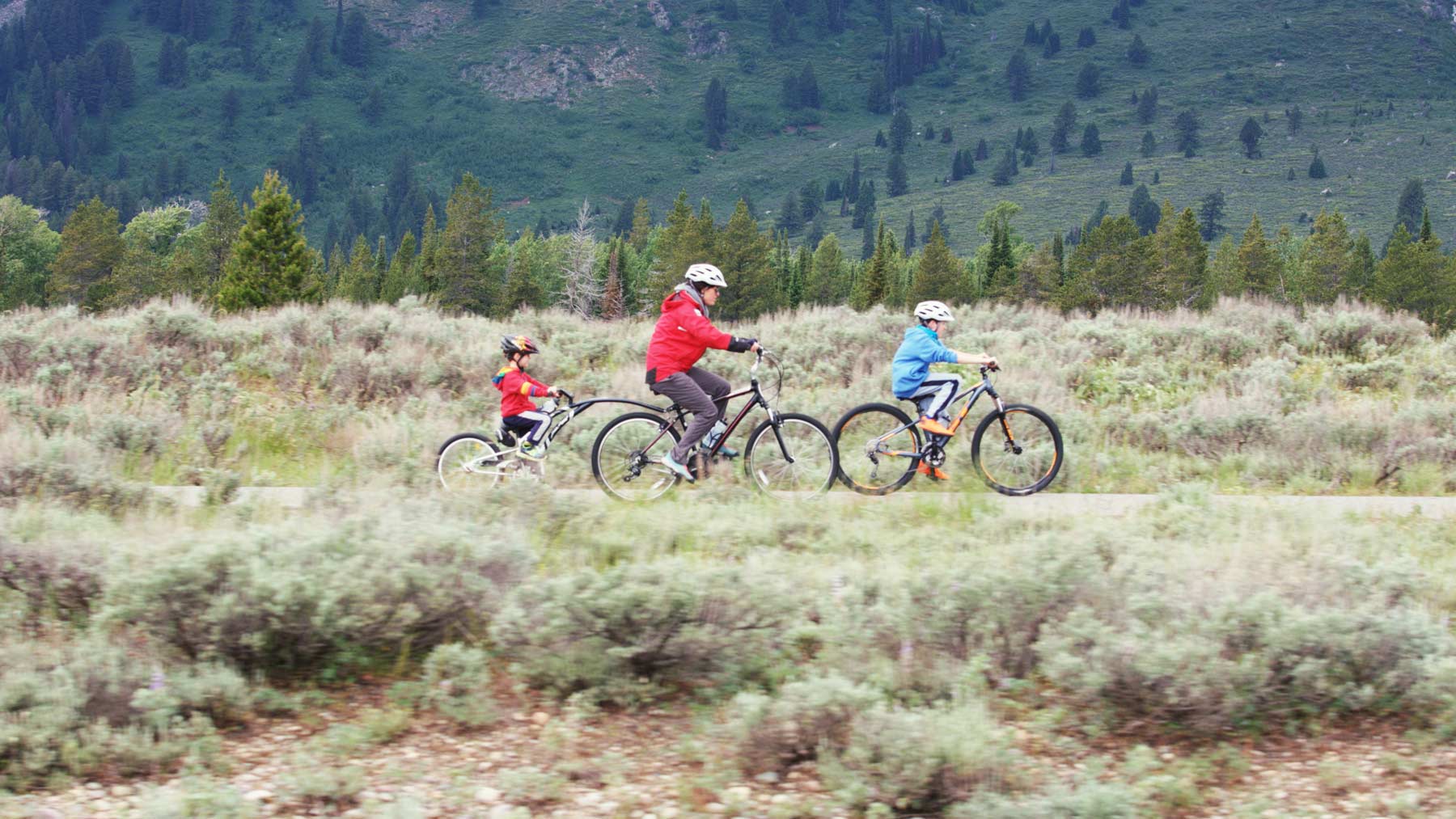
Raft The Wild & Scenic Snake River
The Snake River is a congressionally designated Wild & Scenic River meaning it is stunningly beautiful. There’s no better way to soak it in then rafting down it.
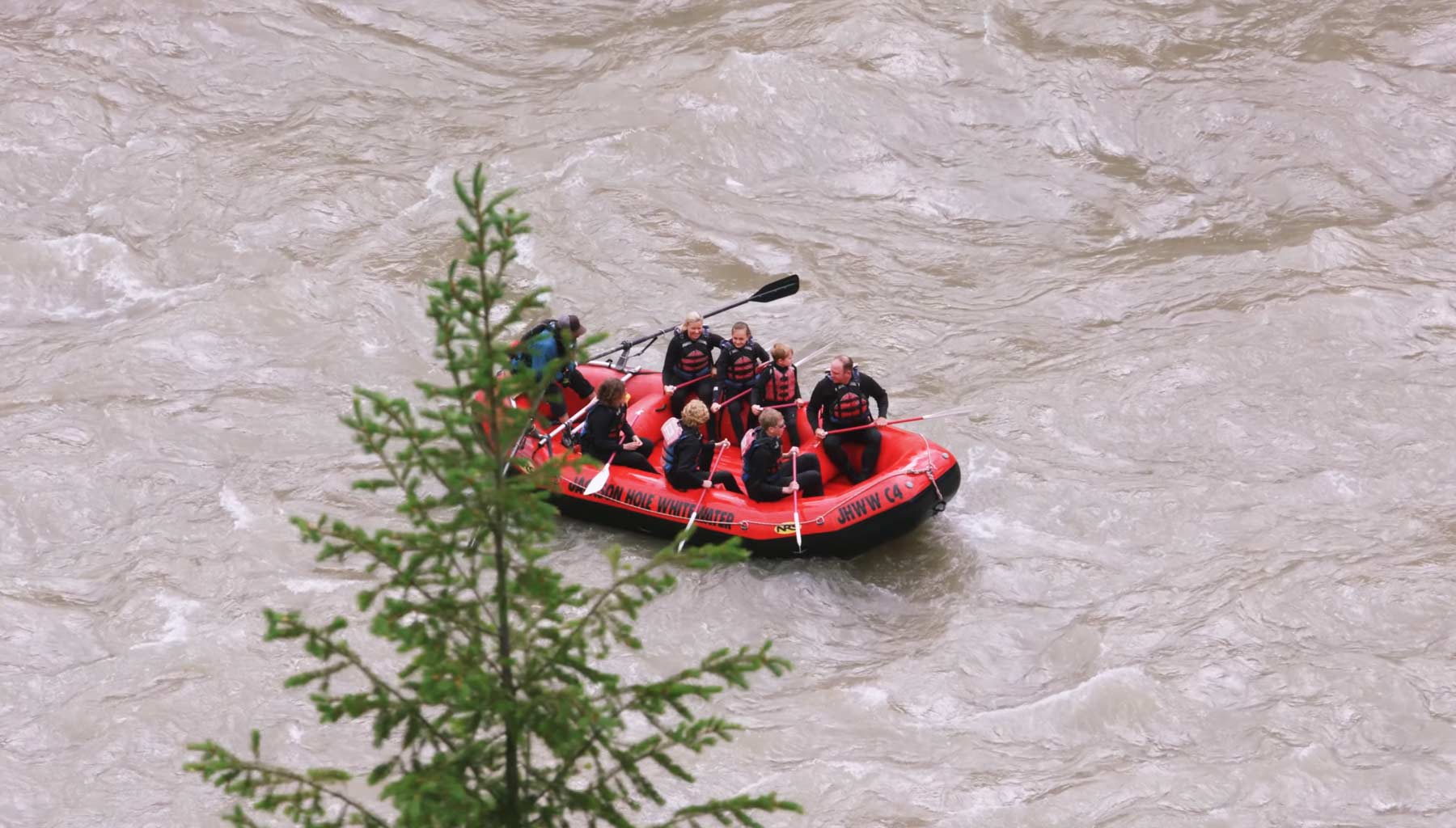
Catch A Glimpse Of The World Famous Moulton Barn
The Moulton Barn is part of the area known as Mormon Row in the park which features a few beautiful and historic barns. Located off of the aptly named Antelope Flat Road, this barn is surrounded by some great wildlife viewing areas.
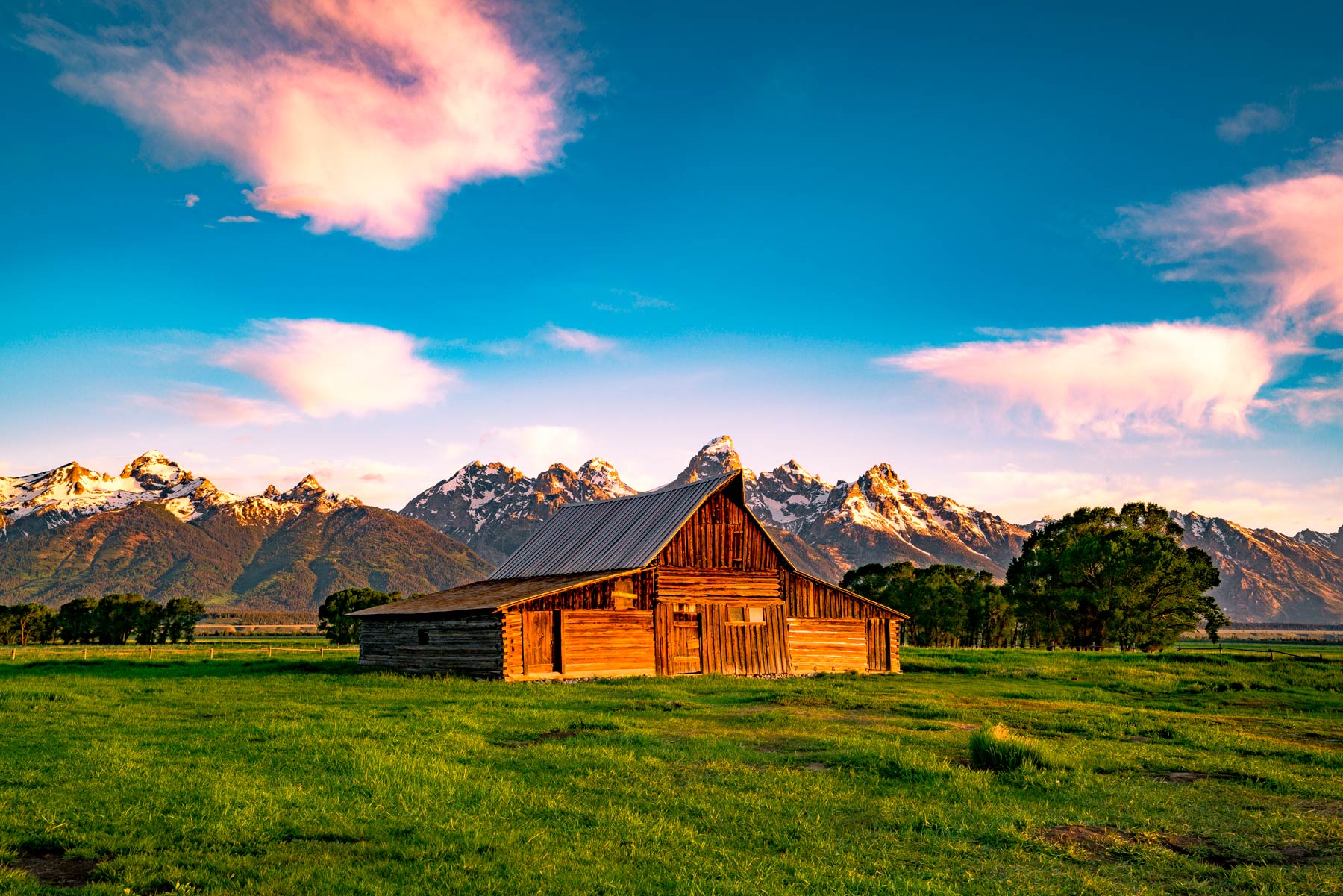
Watch An Epic Sunrise Sunrise From Oxbow Bend
Grand Teton is most beautiful during the sunrise hour of the morning. The best place in Grand Teton to catch a sunrise is from Oxbow Bend where the reflection of Mount Moran dazzles on a clear day.
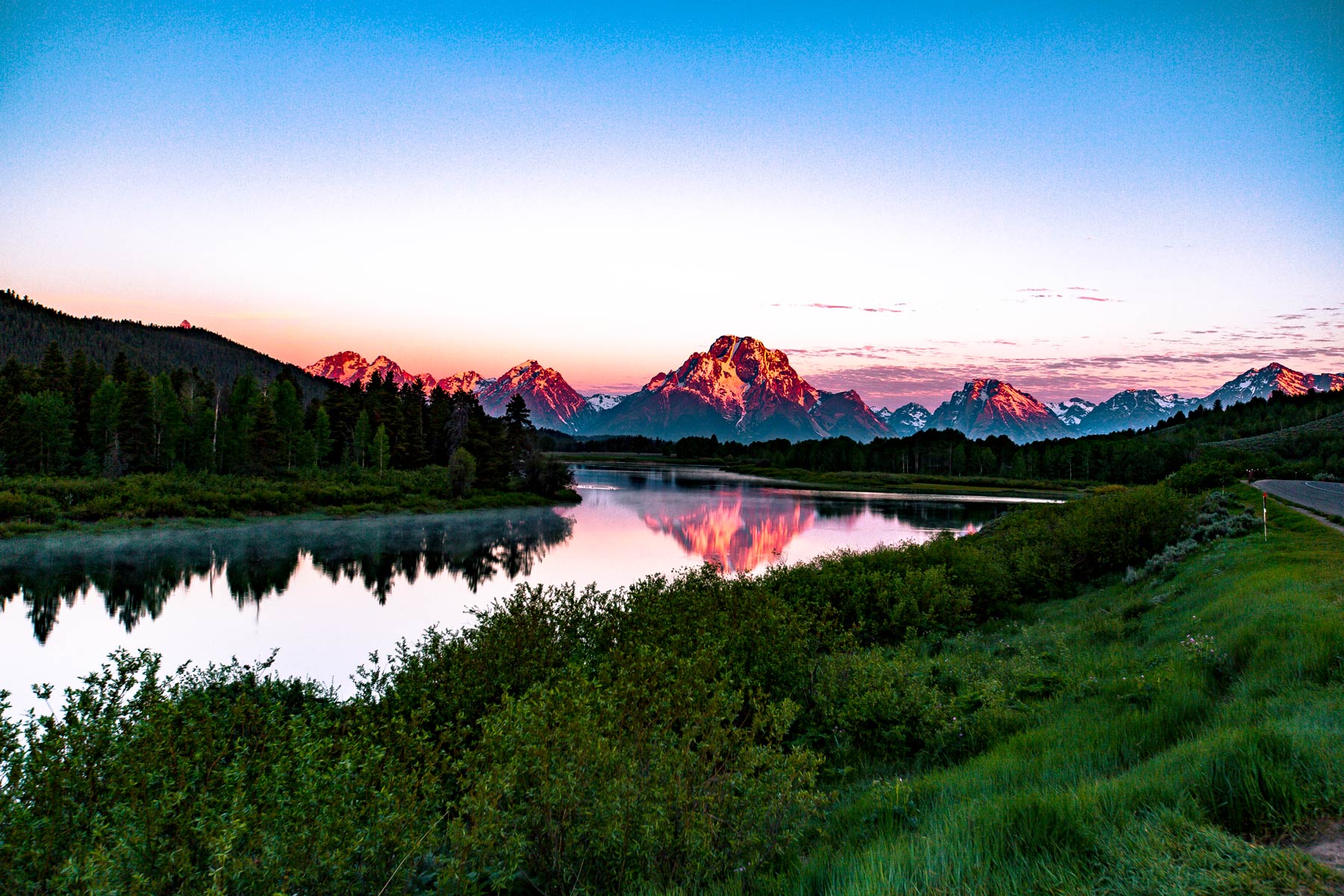
CHECK OUT: 15 AMAZING Facts About Grand Teton National Park
2. Yellowstone National Park
Among the Wyoming National Parks there’s only one which has the unique distinction of being America’s oldest national park.
Yellowstone National Park was established in 1872 as the first national park in the world.
The area that is now Yellowstone National Park has a long history of human use and habitation. Native American tribes, including the Crow, Blackfoot, and Shoshone, have lived in the region for thousands of years.
European explorers and fur trappers began to arrive in the area in the early 1800s, and by the mid-19th century, the region had become a popular destination for hunting, fishing, and sightseeing.
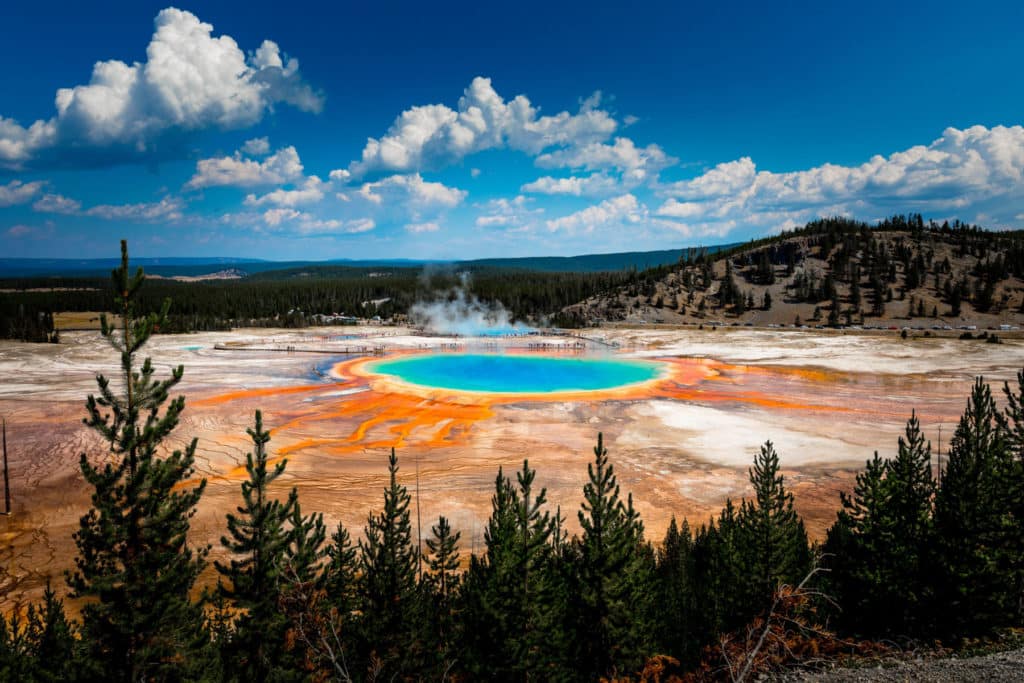
RELATED: 15 BEST Things To Do In Yellowstone National Park
Interesting Fact About Yellowstone
I have to warn you [early and often my wife tells me] that I am retired history teacher. I’m also fascinated by the history of places I encounter. I hope that you are too, but I’ll try to make this a short history lesson just to be on the safe side. And, no homework, I promise!
Before it became America’s first national park, people explored this fantastic place. They told tales of its magnificent beauty and amazing natural wonders. Few believed them however.
Then, in 1869, C.W. Cook saw some of Yellowstone’s incredible geysers with two traveling companions. Cook was so moved by his experience that he submitted an article to Lippincott’s magazine.
He received a curt reply from them which read as follows: “Thank-you, but we do not print fiction.” Aren’t publishers wonderful.
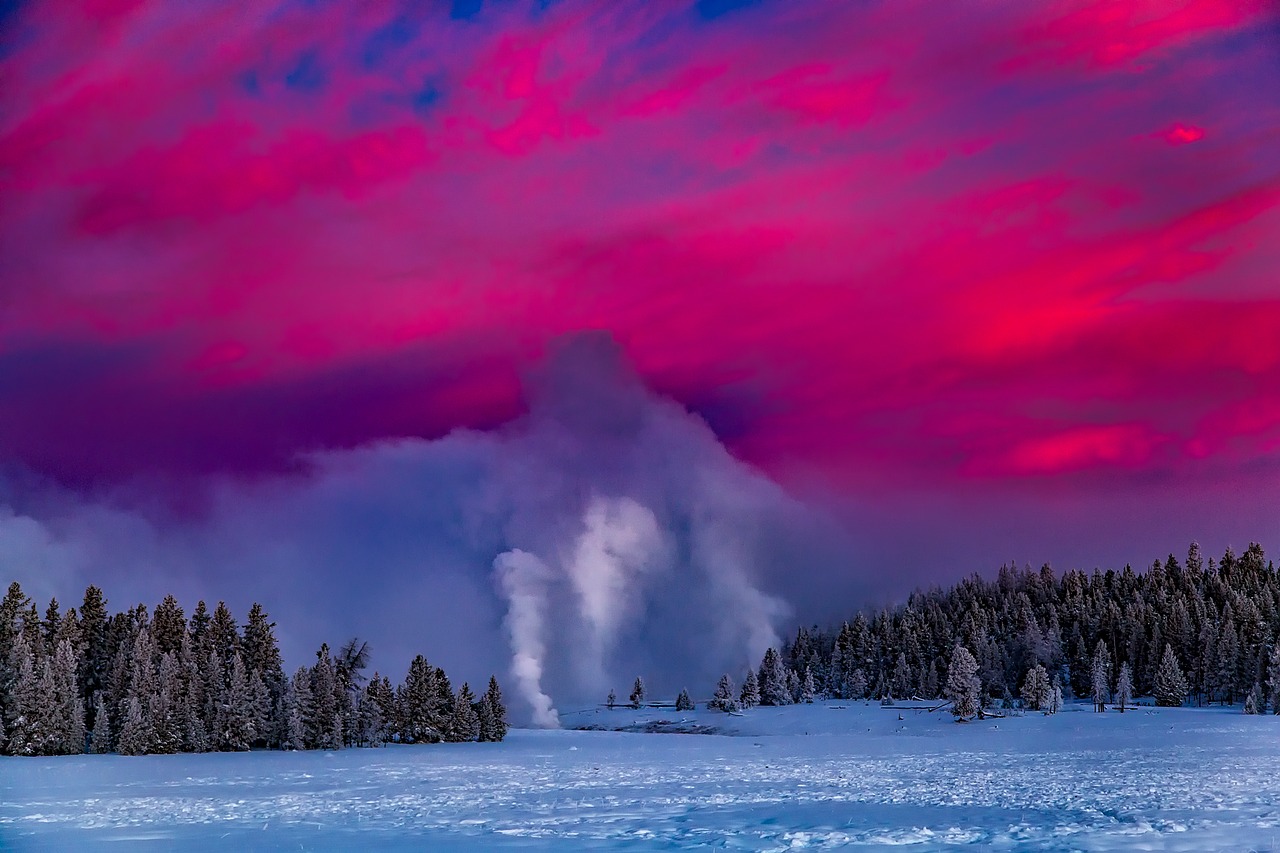
CHECK OUT: 18 (FASCINATING) Yellowstone National Park Facts You Probably Didn’t Realize
10 Epic Things To Do At Yellowstone National Park
There are so many wonderful things to see and do at Yellowstone National Park.
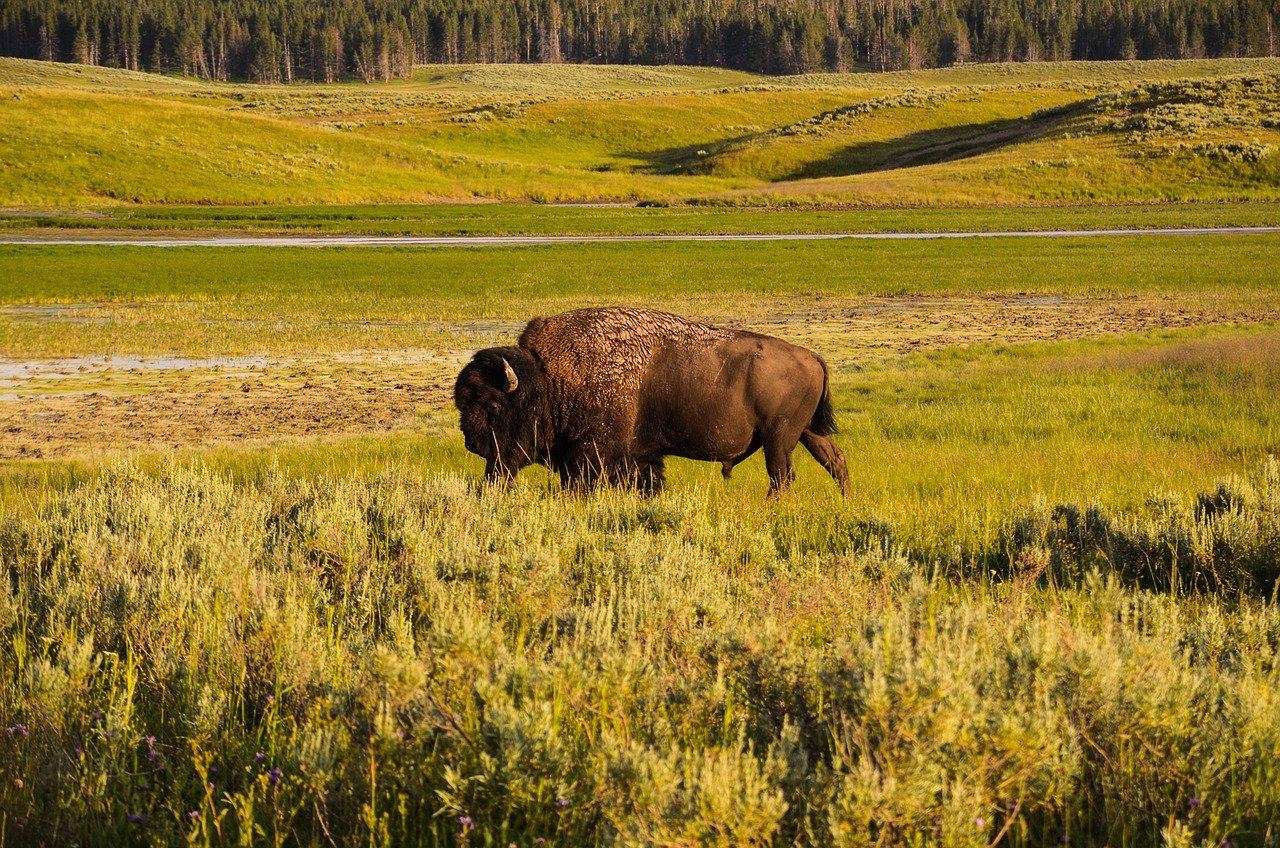
10. Go Camping-There are many campsites inside the park though you should check availability before you arrive.
9. Go Fishing-Try the trout waters north, south and west of Cody. They’re filled with native brown trout, rainbow trout and brook trout.
8. Check Out The Local Culture-See the Plains Indian Museum or visit one of five museums at the Buffalo Bill Center of the West.
7. Explore The Rocks & Fossils-Inside Yellowstone you will find basalt columns formed by lava and a petrified forest.
6. Go Rafting-Raft down one of the nearby rivers or check out the information on rafting trips which is available at the park entrances.
For a complete list, check out our article on all of the Best Things to Do in Yellowstone National Park
Top 5 Things to Do at Yellowstone
5. Take A Hike-There’s a 1,300 mile trail system. Some of the most popular hikes are Bunsen Peak, Fairy Falls and Uncle Tom’s Trail.
4. Visit The Grand Canyon Of The Yellowstone-This incredible place includes three glorious waterfalls. The overlook of the lower falls offers a breathtaking view.
3. See The Incredible Wildlife-Yellowstone is home to more wild animals than anyone else in America. There are are Bears, Wolves, Moose, Elk, Bison, Badgers, Otters, Fox and so much more to see inside the park.
2. See The Geysers Erupt– What would a visit to Yellowstone be without a trip to the Old Faithful Geyser. You don’t have to stop there, however, as Yellowstone is home to the most active geyser field in the world.
1. Sit Back, Relax & Soak It All In-After all, you’re on vacation. You can do as little or as much as you want. I tend to lean towards the as little side, but we’re all different.
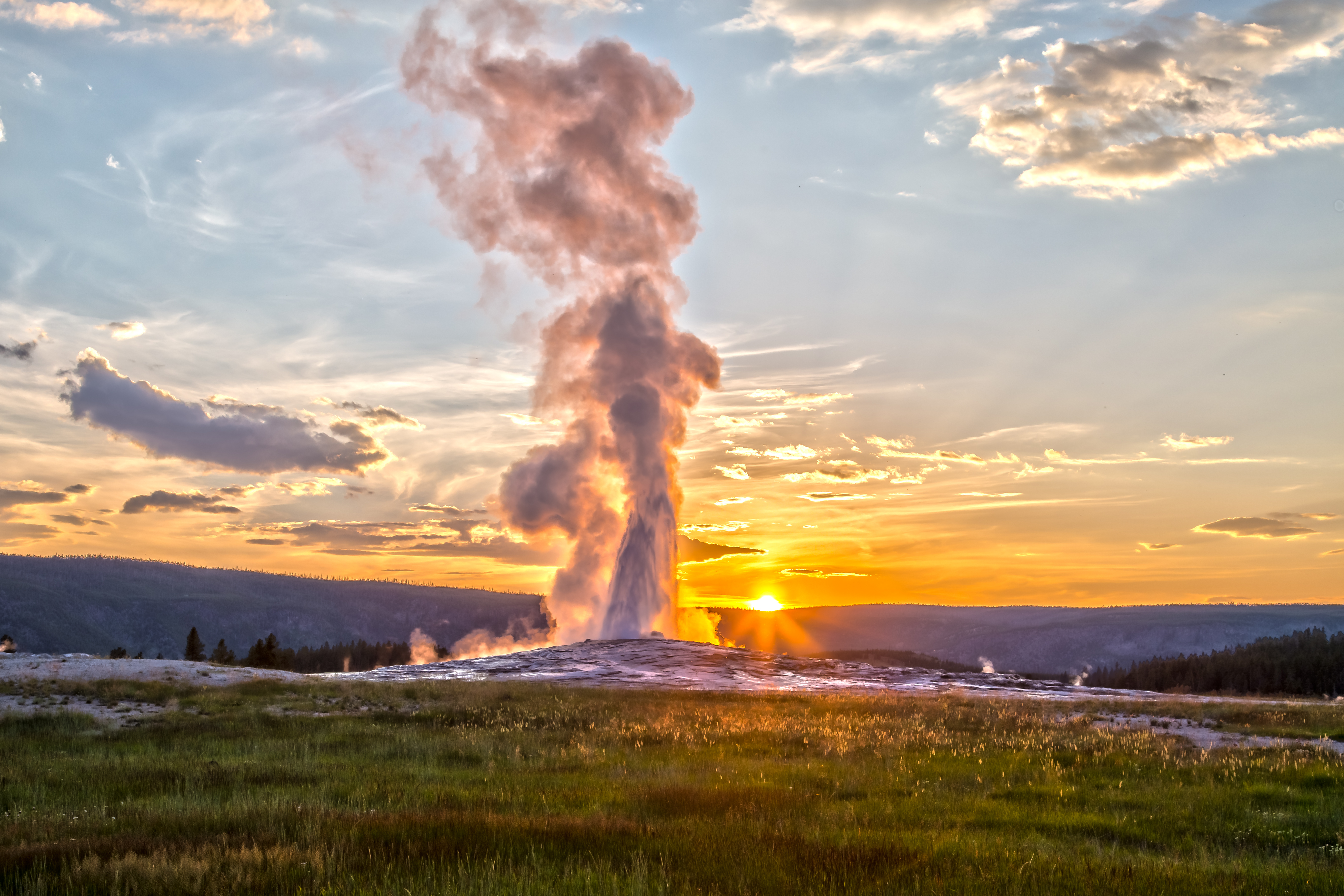
Want to learn about some of the classic films and television series that were made at Yellowstone and America’s other national parks? Check out our articles: Look Familiar? 25+ CLASSIC Movies Filmed In The National Parks & Look Familiar? 10+ CLASSIC Television Shows Filmed In The National Parks
3. Devils Tower National Monument
Imagine that at one of the Wyoming National Parks the U.S. Government built a secret installation to contact extraterrestrials.
Actually, that never happened despite what Director Steven Spielberg would have us believe in Close Encounters Of The Third Kind.
Of course this brings me to Devils Tower National Monument.
It’s actually America’s first national monument thanks to Theodore Roosevelt invoking his newly acquired powers under the 1906 Antiquities Act.
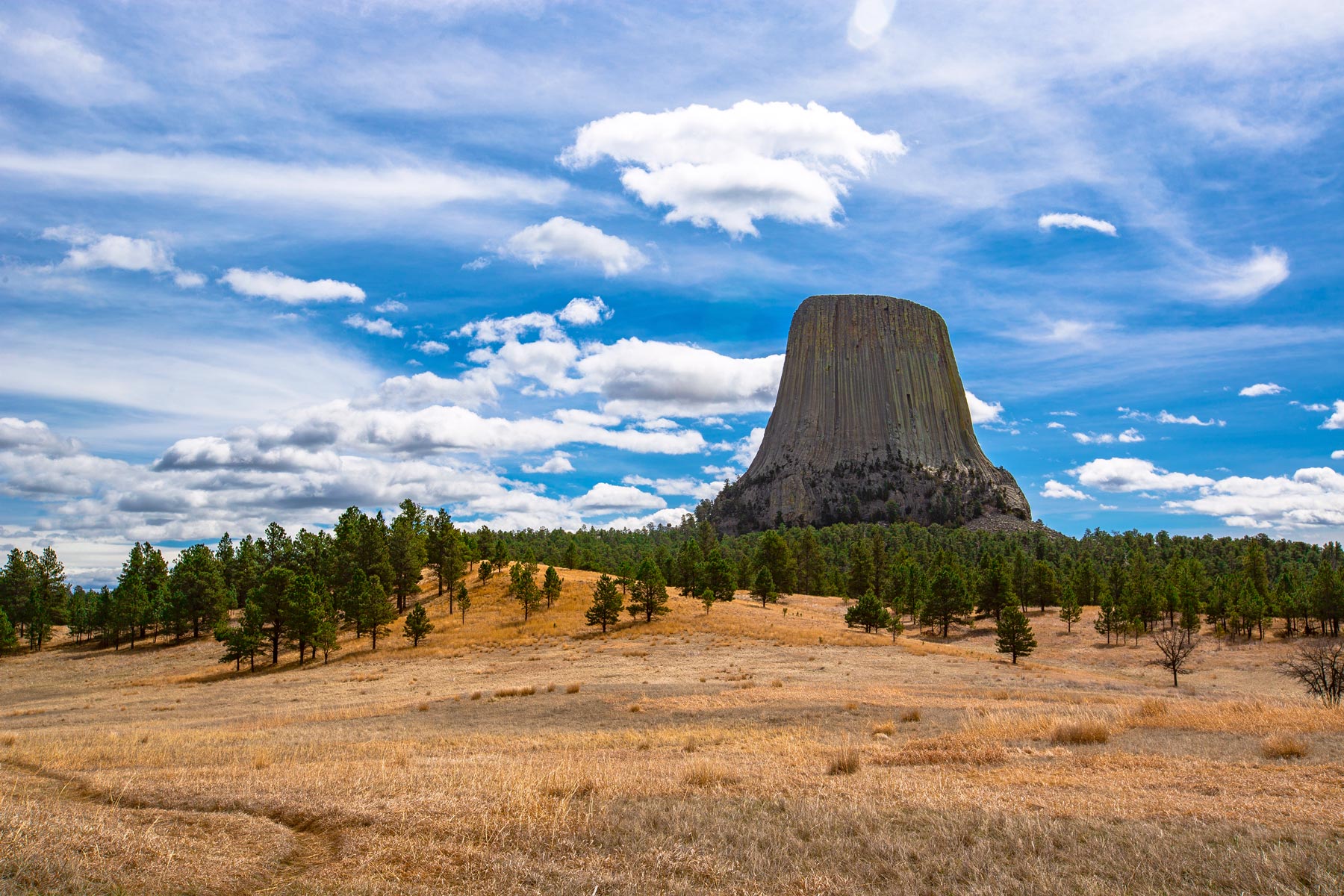
The Story Of Devils Tower
Devils Tower National Monument is a unique geological formation. The tower is a massive, vertical rock formation that rises over 1,200 feet above the surrounding terrain. The monument was established in 1906 by President Theodore Roosevelt as the first national monument in the United States.
The tower is made of a type of rock called phonolite porphyry, and its origins date back to a volcanic eruption that occurred over 50 million years ago. The vertical columns of rock that make up the tower were formed as the volcano cooled and solidified.
The tower has significant cultural and spiritual importance to the local indigenous people, including the Lakota Sioux, Cheyenne, and Kiowa tribes. Many tribes have stories and ceremonies associated with the tower, and it is considered a sacred site by some.
The Devils Tower National Monument is a popular destination for climbing, hiking and sightseeing. It is also a popular place to watch the sunset and the starry night sky due to the low light pollution. It is also one of the best place to spot the Pileated woodpeckers, Golden Eagles and other avian species

Check Out: List Of 128 BEST US National Monuments Ranked
Don’t Forget To Visit Prairie Dog Town While At Devils Tower
If you enjoy watching wildlife then you’ll be entertained by the antics of the prairie dogs in Prairie Dog Town. These small rodents live in towns in burrows underneath the surface.
It’s so much fun to watch them frolic amongst themselves. Watching these fun little critters, you can definitely tell who’s been naughty and who’s been nice
There’s also deer and foxes as well as peregrine or prairie falcons. You may want to bring your binoculars and camera with you. You never know who (or what) might surprise you.
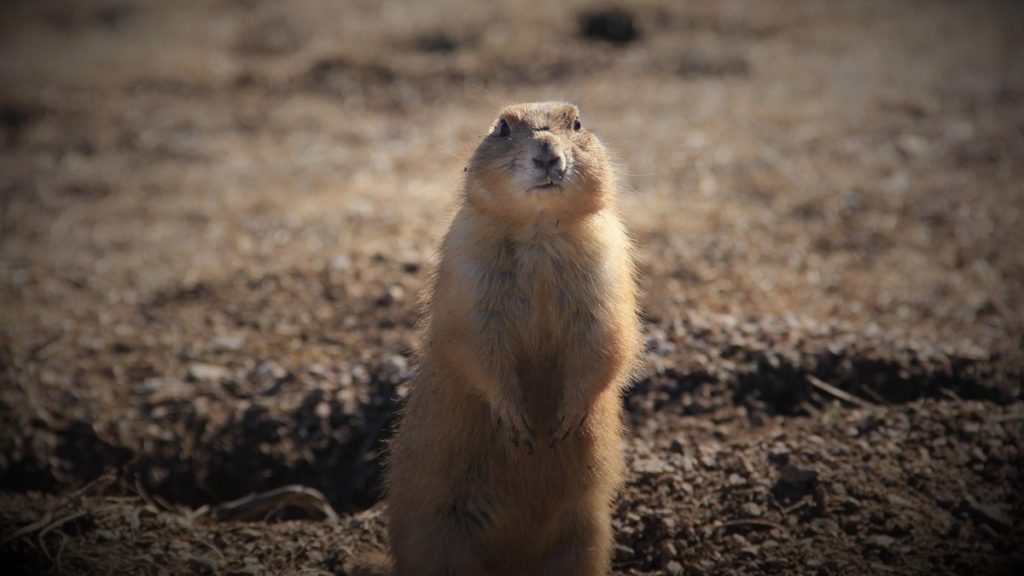
4. Bighorn Canyon National Recreation Area
Imagine one of the Montana National Parks featuring over 120,000 acres of wilderness that straddle the northern Wyoming and southern Montana borders.
Actually, you don’t have to imagine. You can experience it yourself at Bighorn Canyon National Recreation Area.
Bighorn Canyon National Recreation Area located in northern Wyoming and southern Montana.
It encompasses over 120,000 acres of land along the Bighorn River, including the Bighorn Canyon, which is over 14 miles long and up to 1,000 feet deep. The area is known for its unique geology, including colorful rock formations and cliffs, as well as its wide variety of plant and animal life.
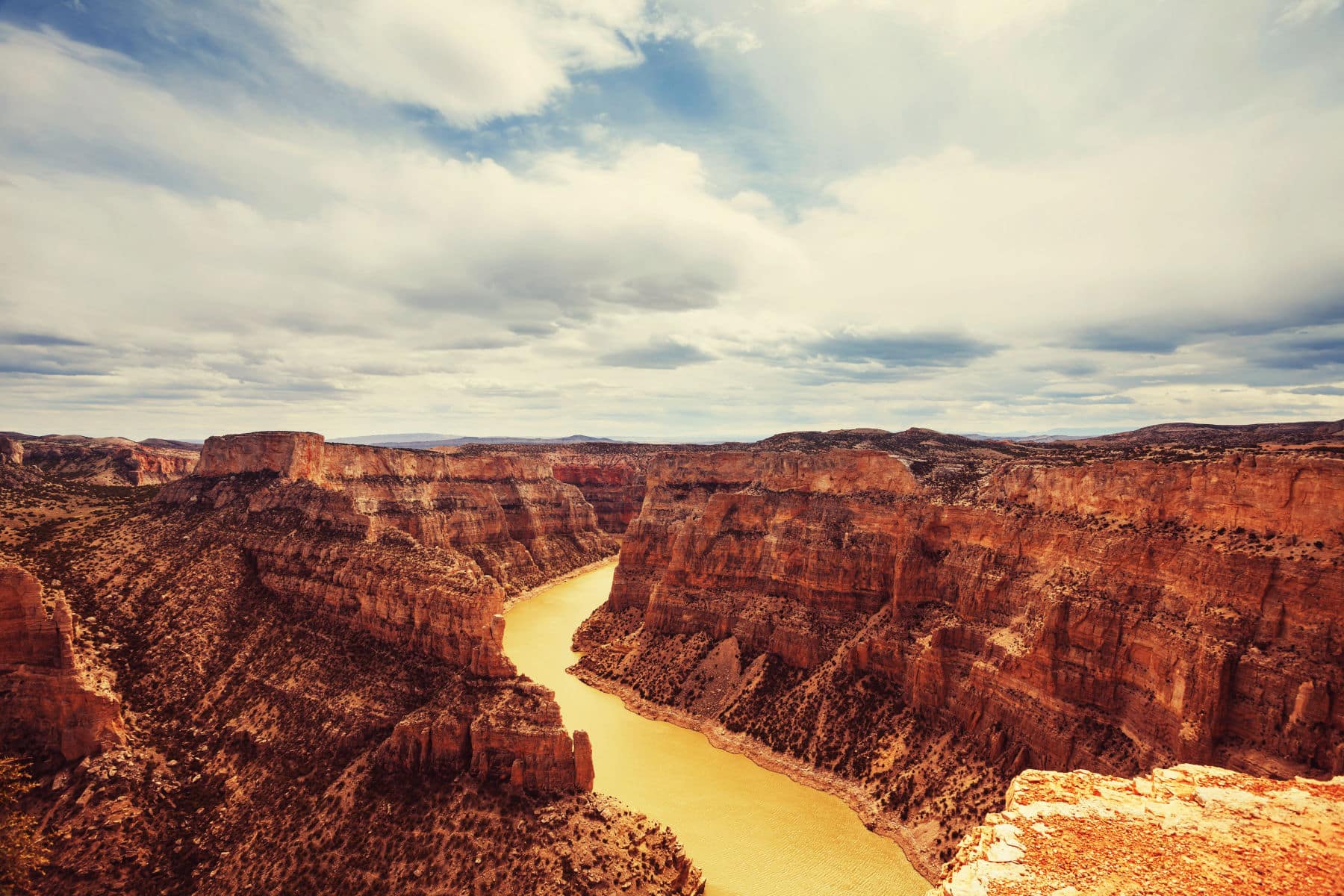
An Area Rich In Cultural History
The area is also rich in cultural history, with evidence of human habitation dating back over 10,000 years. The area was home to several Native American tribes, including the Crow, Cheyenne, and Arapaho, and also saw significant activity during the days of the American West, including the presence of the U.S. Army and the development of the Homestead Act.
Today, the Bighorn Canyon National Recreation Area offers a variety of recreational activities, including fishing, boating, hiking, and camping. Visitors can also take guided boat tours of the canyon, and learn about the area’s history and natural resources at the Bighorn Canyon Visitor Center.

Things To Do At Bighorn Canyon
Like you, I’m someone who is looking for fun things to do when I head off to a national park.
When it comes to Bighorn Canyon, it might take me less time to list the things that you can’t do rather then the things that you can.
Bighorn offers a wide range of recreation activities including:
- Bicycling-If you’re looking for a good workout take the South District park road where you parallel the ancient Bad Pass Trail or in the North District pedal the Ok-A-Beh road.
- Boating-You will enjoy the waters of the Bighorn Lake.
- Camping-There are five camping areas with over 100 spots.
- Fishing-At Bighorn, there is a diverse range of fish including trout and walleye.
- Hiking-There are over 27 miles of trails (see below). Have no fear, you’ll get those steps in.
- Historic Ranches– Visitors can see an amazing collection of ranches that have been kept in their original condition.
- Horseback Riding-The park allows horseback riding in the South District. Don’t be afraid to saddle up.
- Wildlife-From herds of wild horses to bears in their natural habitat to Bighorn Sheep roaming the high desert there’s a bevy of wildlife for everyone to watch.

More Wyoming National Parks
5. California National Historic Trail
During the 1840s and 1850s, over 200,000 emigrants traveled to the gold fields and rich farmlands of California. It was the greatest mass migration in American history. And you can retrace their steps at one of the amazing Montana National Parks.
The California National Historic Trail retraces this historic migration. It’s over 5,000 miles long and covers portions of 10 states.
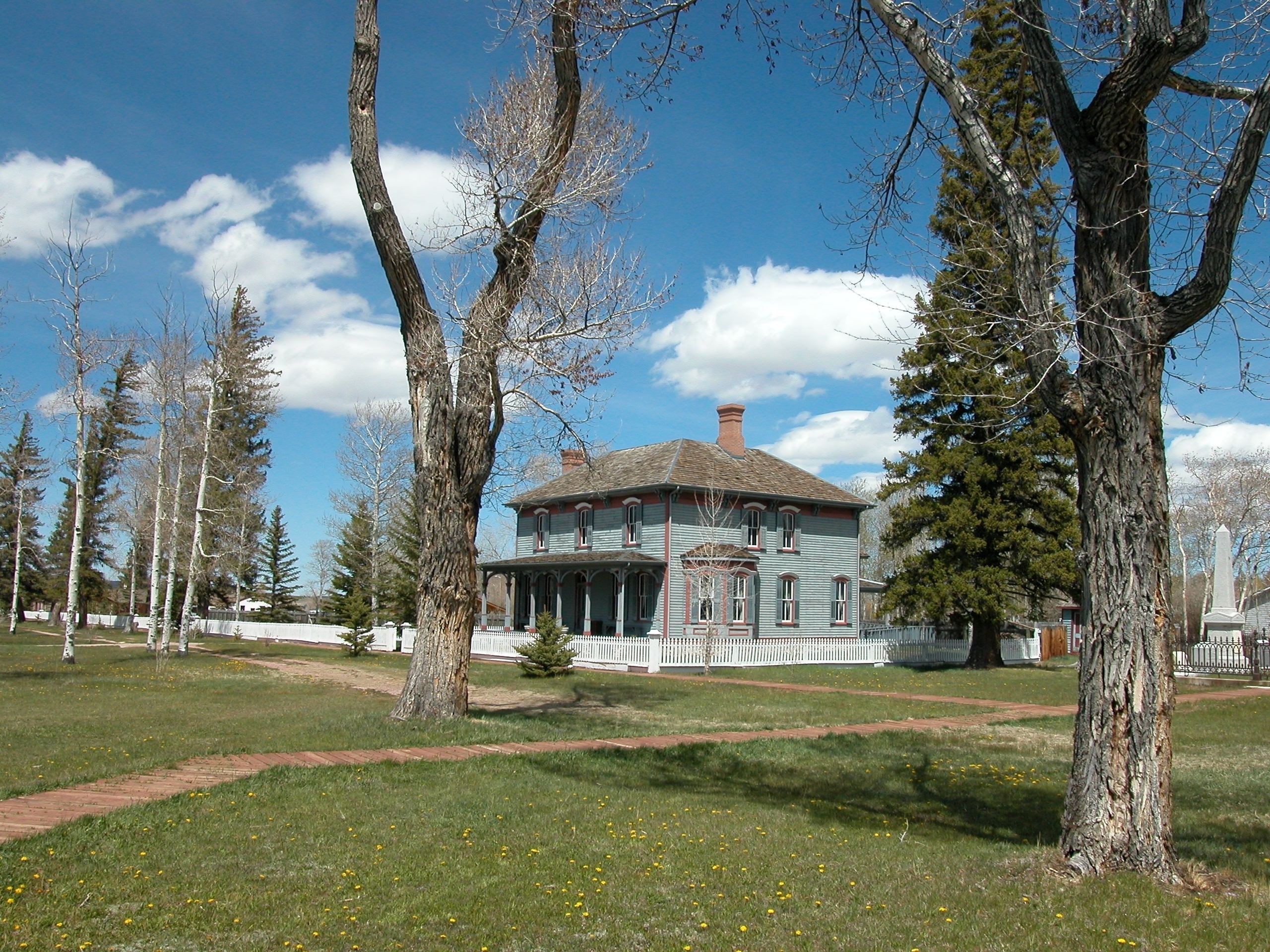
The California Historic Trail In Wyoming
The National Historic Trails Interpretive Center in Casper, Wyoming, is a great place to learn about the routes of the Oregon Trail, the Mormon Trail, the California Trail, and the Pony Express and discover the journey settlers took along the way.
The Center brings history to life with multimedia presentation, living history demonstrations, guided hike, and special events. Exhibits are in chronological order, which helps visitors to understand what happened and when.
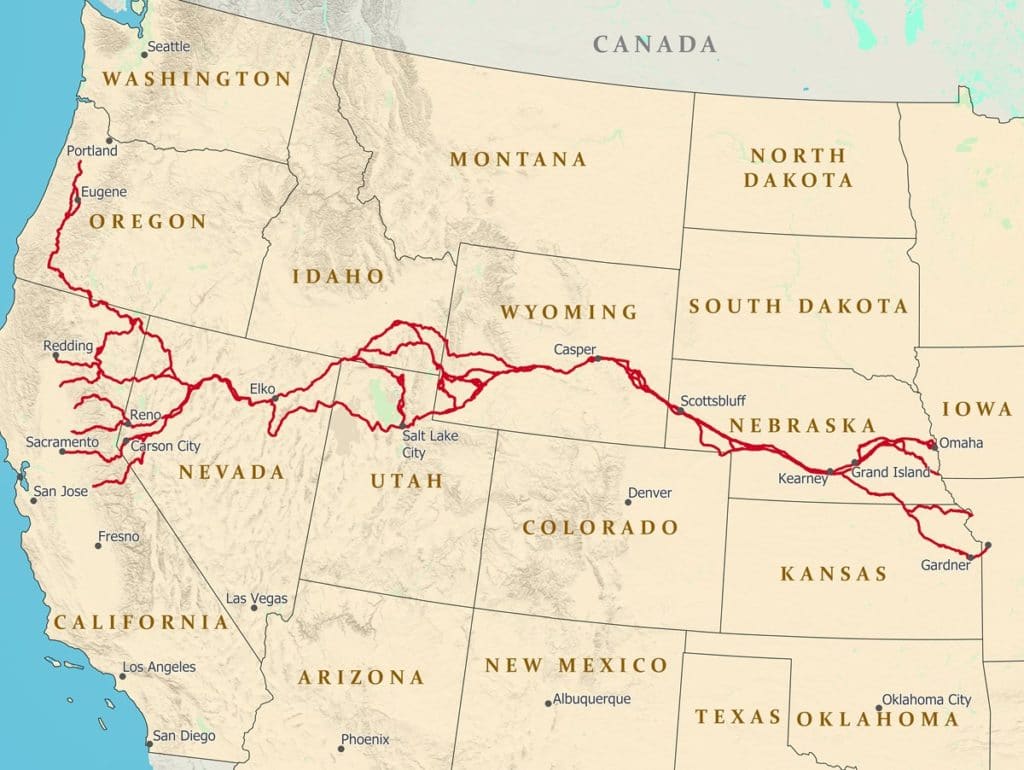
RELATED: 6 EPIC Maine National Parks For Your Next Visit To The Pine Tree State
6. Fort Laramie National Historic Site
Fort Laramie was established as a private fur trading fort in 1834. As Americans migrated west, it evolved into the largest and best known military post on the Northern Plains.
As far as Wyoming National Parks go, this one tells the story of America’s Westward Migration.
The fort played a significant part in America’s goal to expand its boundaries from sea to shining sea. It was a base of operations for efforts to make sure that the Native Americans did not jeopardize this westward migration.

RELATED: 7+ (AMAZING) Oklahoma National Parks-Everything To Know
Things To See And Do At Fort Laramie
At the visitors center, you can see an 18-minute film highlighting the history of the fort and the important role it played. You can also see uniforms, weapons, and artifacts relating to the history of the19th century western frontier.
While you’re there you might also want to check out the Fort Laramie Historical Association Bookstore. So many books, so little time!
The Confluence Trail allows you to explore history and nature. It’s a 1.6 mile loop that takes you from the Old Army Bridge to the confluence of the North Platte and Laramie Rivers.
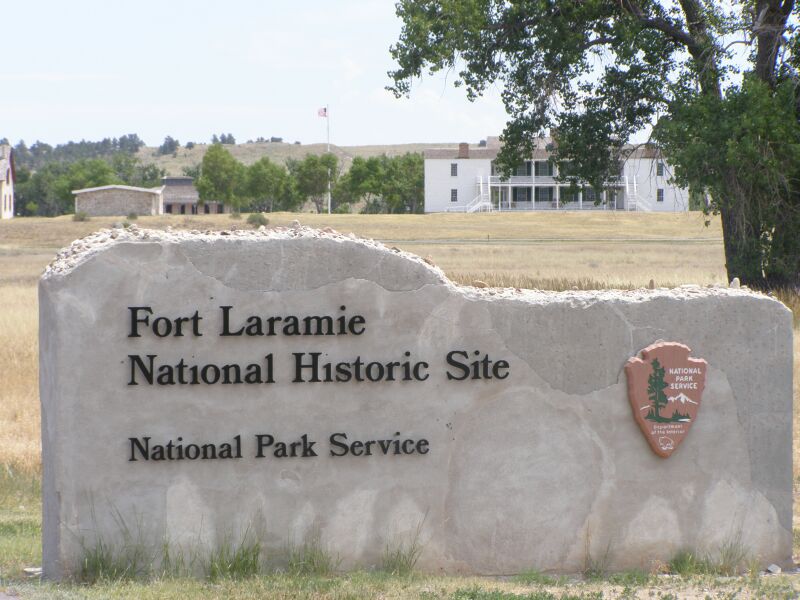
RELATED: 45 National Parks Books (Great Gifts For Park Lovers)
7. Fossil Butte National Monument
If you enjoy exploring the past then it doesn’t get any better than fossils. And it doesn’t get any better than Fossil Butte National Monument. It’s one of the Wyoming National Parks which helps to tell the origin story of what life was like before humans came along.
At Fossil Butte National Monument you’ll find a variety of fossil fishes, insects, plants, reptiles, birds and mammals from ancient Fossil Lake are displayed in the visitor center. It’s a great opportunity to learn about the history of creatures which lived eons ago.
But wait, there’s more! Fossil Butte offers 4 miles of hiking trails. Have no fear! You’ll get those 10,000 steps. Of course, that’s only if you want to. No pressure here.
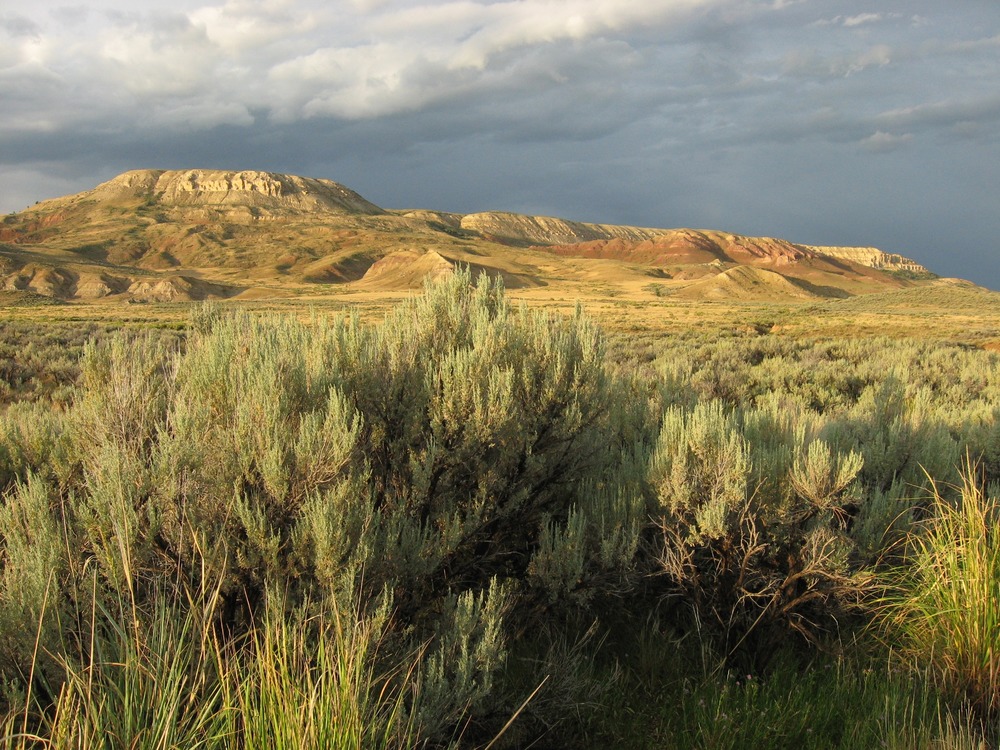
Fossil Butte Hiking Trails
The Historic Quarry Trail is a 2.5 mile loop, 600 feet elevation gain. Visitors pass through parts of the Wasatch and Green River Formations.
A short, side loop leads to a historic fossil quarry. Wayside exhibits provide information about geology, area history, wildlife, and plants of the high desert.
The Nature Trail is a 1.5 mile loop, 300 feet elevation gain. This trail winds through sagebrush and a spring-fed aspen forest. Be sure to watch for wildlife as you hike. This is one nature trail where you don’t want any unexpected surprises.
Wayside exhibits interpret the wildlife, plants, and geology of this high desert oasis. At the top, enjoy the scenic views at the benches overlooking Fossil Butte. (Source: NPS)
RELATED: 3 (EPIC) Vermont National Parks For Your Next Visit To The Green Mountain State
More Wyoming National Parks
8. Mormon Pioneer National Historic Trail
The Mormon Pioneer National Historic Trail is another interesting Wyoming National Park.
The trail that covers approximately 1,300 miles across five states, including Illinois, Iowa, Nebraska, Wyoming, and Utah.
It was established in 1978 to commemorate the journey of the Mormon pioneers from Nauvoo, Illinois, to the Salt Lake Valley in Utah, led by Brigham Young in 1846-1847. The trail retraces the route taken by the pioneers and provides a glimpse into the history of the Mormon Pioneer era.
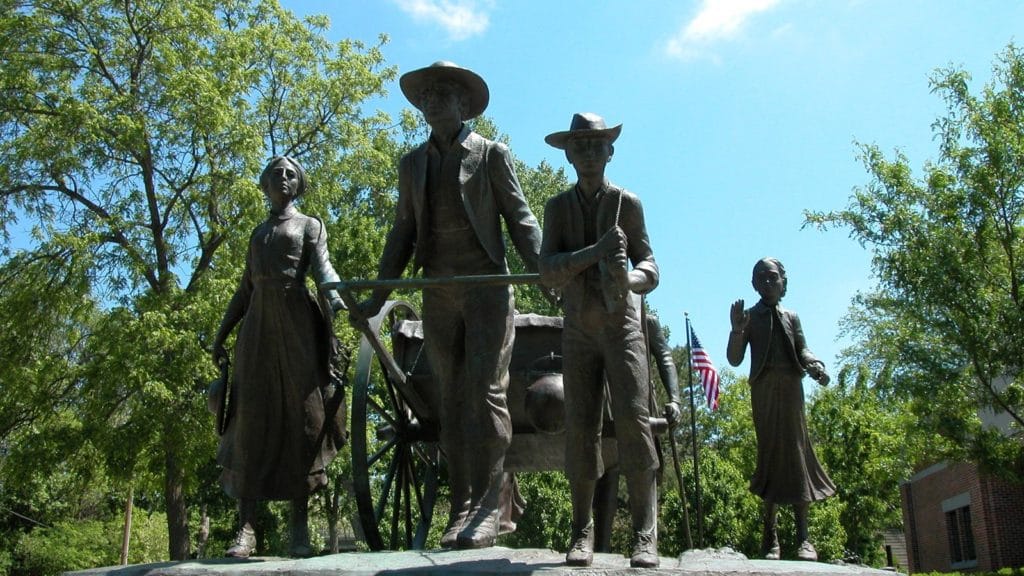
It passes through several historical sites, including Nauvoo, Winter Quarters, and Fort Bridger, as well as several scenic areas and wildlife habitats.
The trail is managed by the National Park Service and is open to hiking, biking, and horseback riding. It’s also an important part of the American West heritage, and provides opportunities for visitors to learn about the pioneering spirit and the struggles and triumphs of the early settlers.
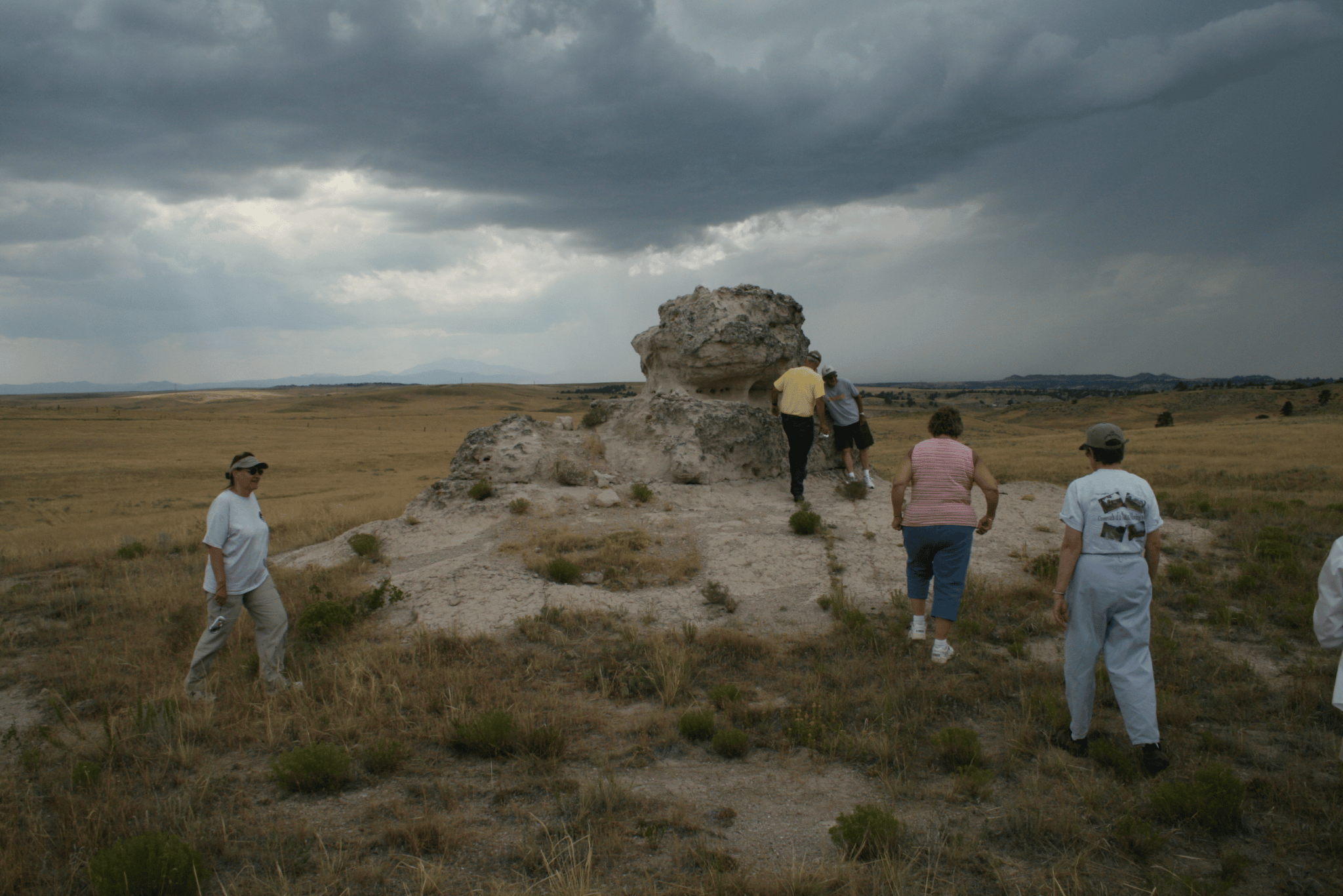
It Became A National Historic Trail
The trail was officially designated as a National Historic Trail in 1978. It is managed by the National Park Service, along with the Bureau of Land Management, and the U.S. Forest Service.
Today, the trail offers a glimpse into the history of the Mormon pioneers and their journey westward. Visitors can hike, bike or drive along the trail and see the historical sites, landmarks, and monuments that commemorate the journey of the pioneers.
These include trail ruts, wagon swales, and inscriptions on rock faces left by the pioneers, as well as interpretive centers and visitor centers. The trail is an important part of the American westward expansion history and offers a unique glimpse into the journey of the Mormon pioneers and their quest for religious freedom and a new home.
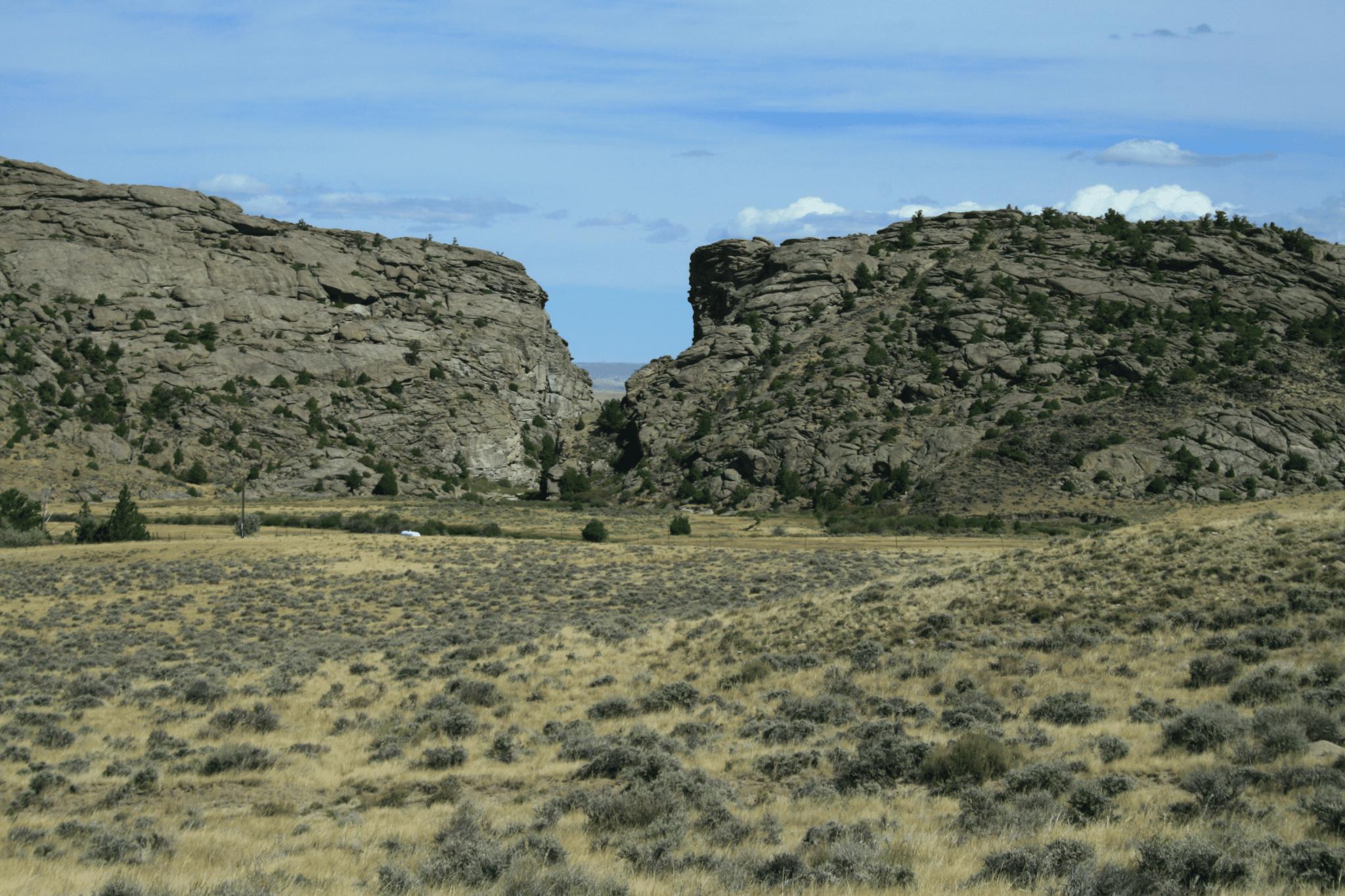
Explore The Route Taking By The Mormon Faithful
There are 8 historic sites or interpretive facilities on the Mormon Pioneer National Historic Trail in Wyoming for you to visit. They include the following:
- South Pass
- Redick N. Allred’s Camp
- Rocky Ridge & Rock Creek Hollow
- Sixth Crossing
- Split Rock & Three Crossings
- Independence Rock
- Greasewood Creek
- Red Buttes (Bessemer Bend)
RELATED: ZION NATIONAL PARK: A (Very) Helpful Guide-Videos, Photos, Locations
9. Oregon National Historic Trail
Among the Wyoming National Parks is recounted the story of the Westward Migration is more than just one place. Consider the story of the Oregon Trail.
Westward Ho! The Oregon Trail was a 2,170-mile emigrant trail which connected the Missouri to valleys in Oregon.
I bet you didn’t realize that the Oregon Trail was a Wyoming National Park! Or at least a part of it anyway.
The original trail was established by fur traders and trappers. Shortly thereafter, wagon trains began the westward trek all the way to the Willamette Valley in Oregon.
From the early to mid-1830s (and particularly through the years 1846–1869) the Oregon Trail and its many offshoots were used by about 400,000 settlers, farmers, miners, ranchers, and business owners and their families. A lot of folks were on the move!

Experiencing the Trail Today
Trail sites to visit in Wyoming include the following:
Lt. Colonel’s Quarters (Burt House, 1884)-Lt. Col. Andrew Burt, a 7th US Infantry officer, and his wife Elizabeth lived in the home 1887-88. They liked relatively plain furnishings rather than the ornate decor in most officers’ houses during the Victorian period.
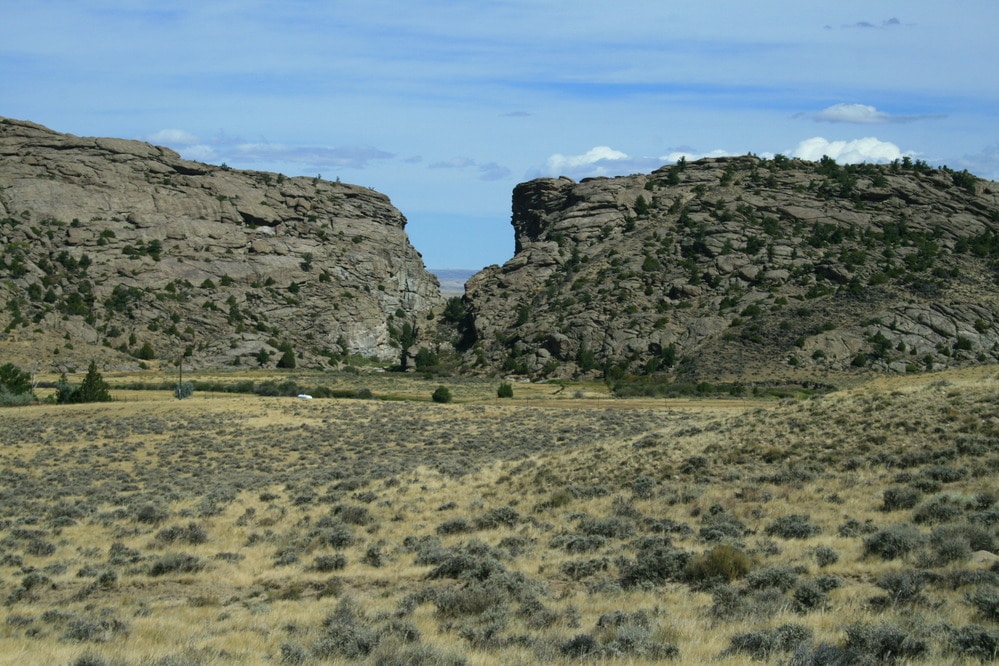
Visiting the Burt House is a great opportunity to step back in time and imagine life in a different day and age.
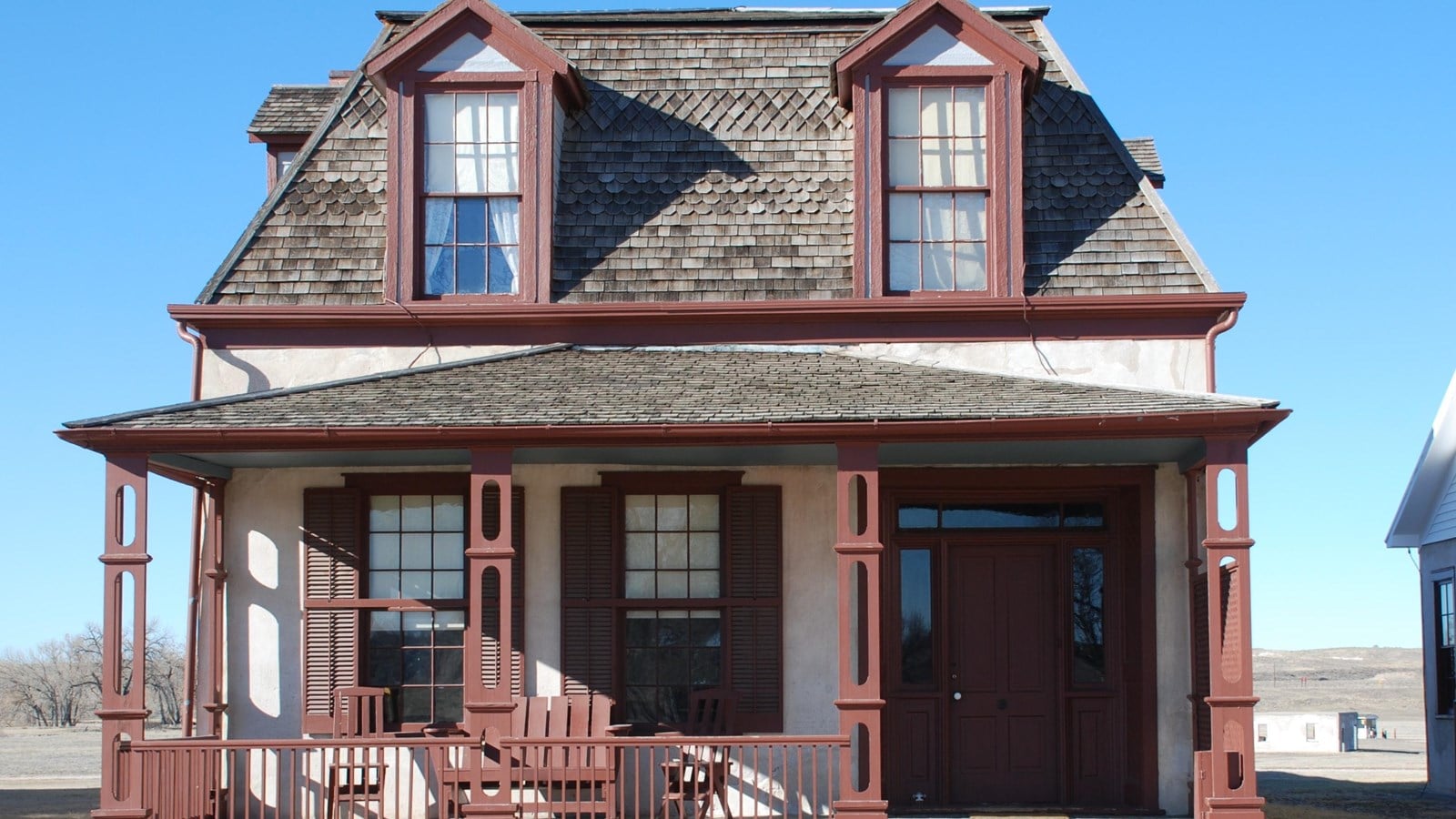
A Doctor Who Made House Calls
Post Surgeon’s Quarters (1875)-Post Surgeon Louis Brechemin and his family normally lived in half of this duplex from 1885 to 1889.
His study held his scientific collections, and most patients were treated there before being sent to the hospital to recuperate. When you see the medical instruments, I think you’ll be most grateful for the advancements in medical science since Dr. Brechemin’s time.
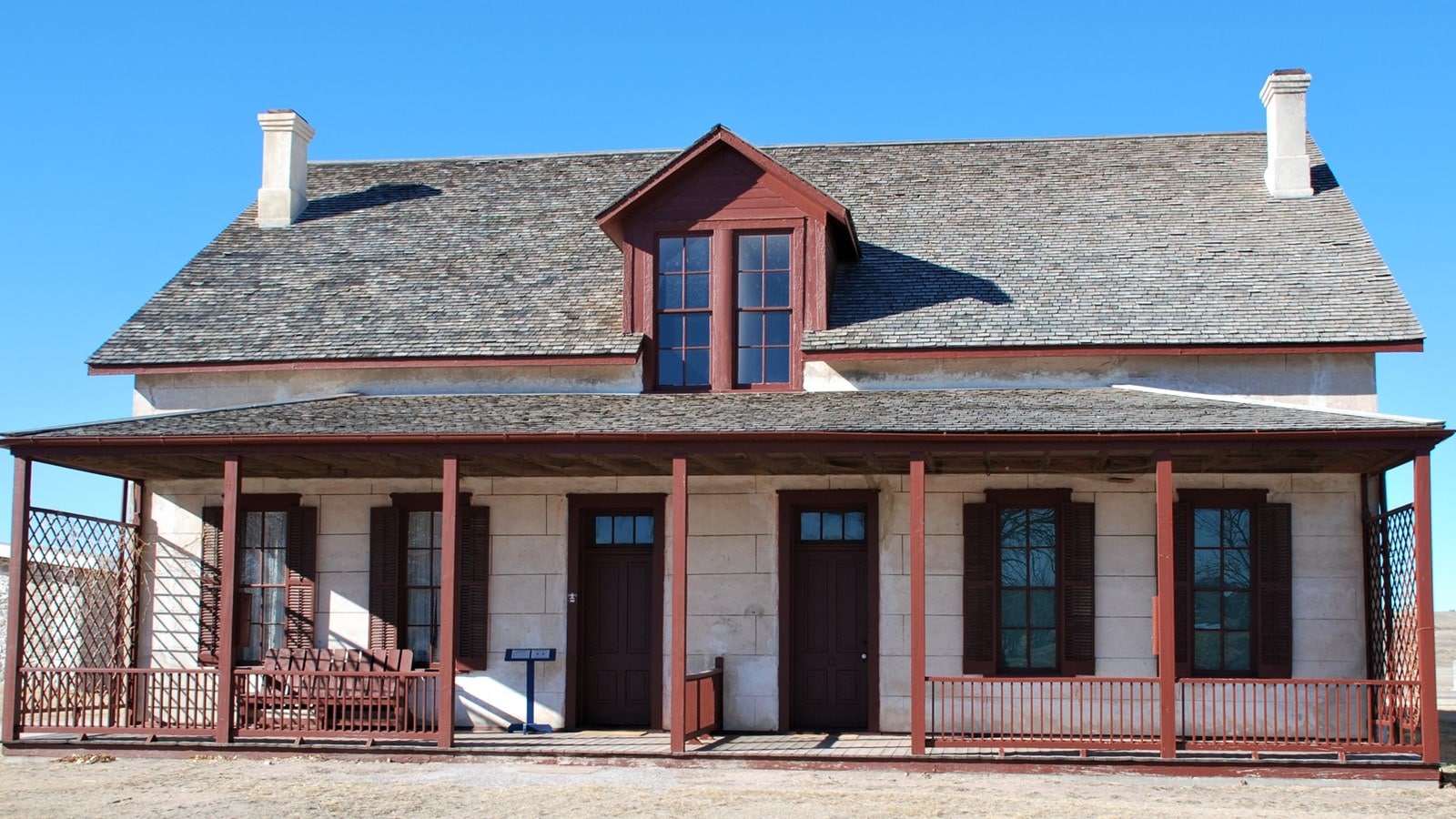
Old Bedlam-Built to house bachelor officers, “Old Bedlam” is Wyoming’s oldest documented building.
The right side is restored to bachelor officers’ quarters in the 1850s; the left side to post headquarters in 1863-64, when fort commander Lt. Col. William O. Collins and his wife lived on the second floor.
I’m not sure how “Old Bedlam” got its name, but with so many bachelor officers quartered there, I can certainly imagine.
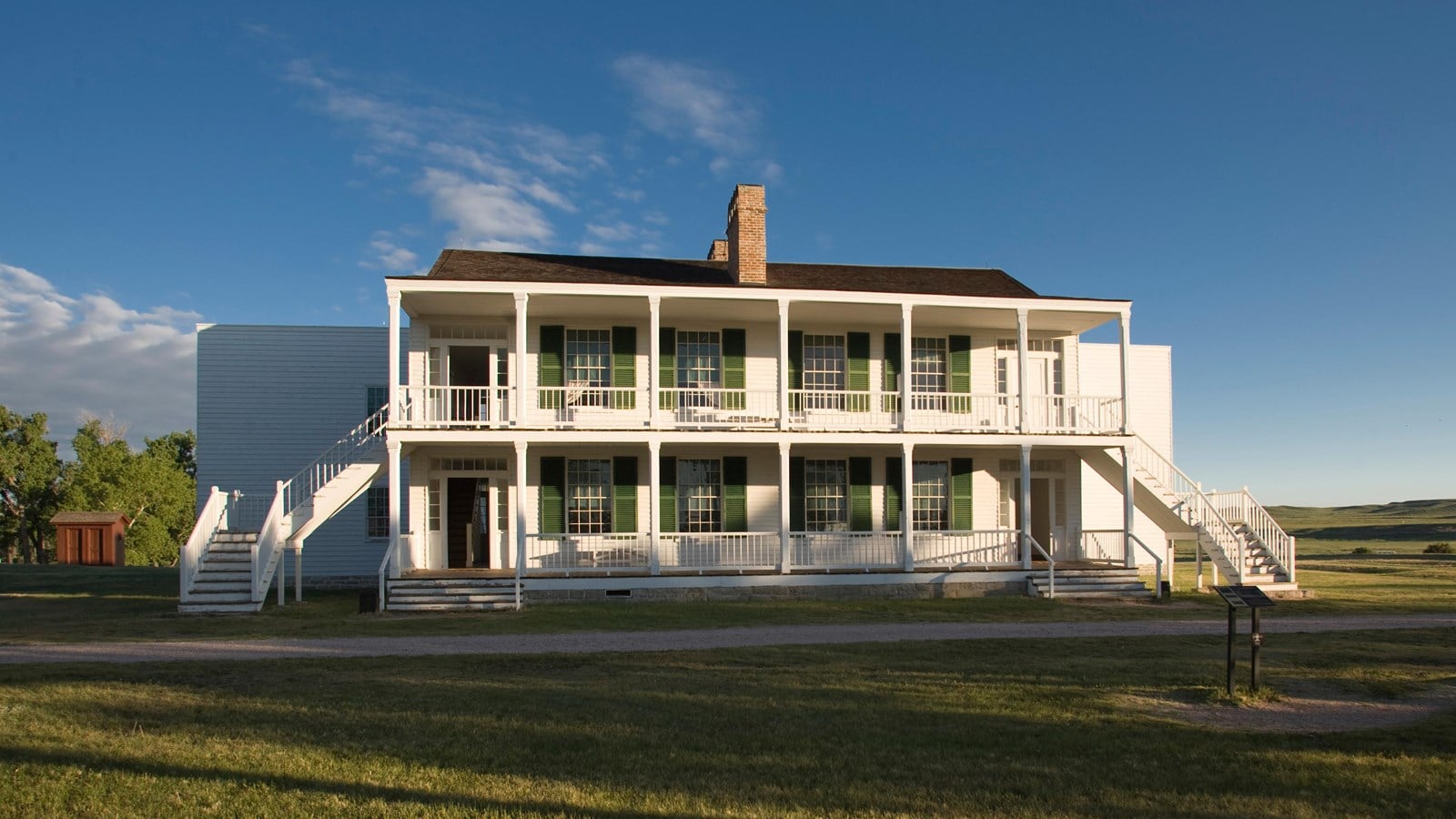
Other Points Of Interest Include
South Pass Overlook-A short, paved pathway contains several interpretive waysides that tell the story of South Pass’s importance to American Indians, mountain men, the fur trade, and to the Oregon, Mormon, California, and Pony Express trails
North Platte River Crossing was one of numerous crossings used by trappers, traders, American Indians, and emigrants to reach Fort Laramie.
In order to enter the fort, two rivers had to be crossed- the Laramie River and the North Platte River. During floods, this could be a very dangerous proposition.
Fort Laramie Historic Site-Fort Laramie once stood sentinel over the Oregon, California, and Mormon emigration trails; was a stop on the Pony Express route; and served as a staging ground for both peaceful and hostile dealings with Plains Indians.
If only those fort walls could talk!
Bedlam Ruts-The Bedlam Ruts are a fine stretch of Oregon Trail ruts and swales that visitors can walk. Be careful when you’re out there.
Register Cliff Historic Site-Following a day’s journey from Fort Laramie, emigrants spent the night at Register Cliff , which rises one hundred feet above the North Platte River valley.
The soft, chalky limestone rock made it easy for emigrants to inscribe their names into the cliff before continuing on their journey. It was Mother nature’s own version of the etch a sketch.
The earliest signatures date to the late 1820s when trappers and fur traders passed through the area. (Source: NPS)
Still More Wyoming National Parks
10. Pony Express National Historic Trail
There’s more Wyoming National Parks and more incredible stories about the westward expansion. In the case of this one, however, it’s a story about getting the mail to folks living out west in a timely manner.
The Pony Express National Historic Trail was a mail delivery service that operated in the United States from April 3, 1860, to October 1861. The trail ran from St. Joseph, Missouri, to Sacramento, California, and covered over 2,000 miles of rugged terrain.
Riders on horseback would carry mail and packages on a relay system, with fresh horses and riders at regular stations along the route.
The Pony Express was able to deliver mail faster than any previous system, reducing the time for mail to travel from coast to coast from about a month to just 10 days. However, the service was expensive and not very profitable, and it was soon replaced by the telegraph and the transcontinental railroad.
The Pony Express National Historic Trail is now a National Park Service trail that covers parts of eight states and is open to hiking, horseback riding, and other forms of recreation.
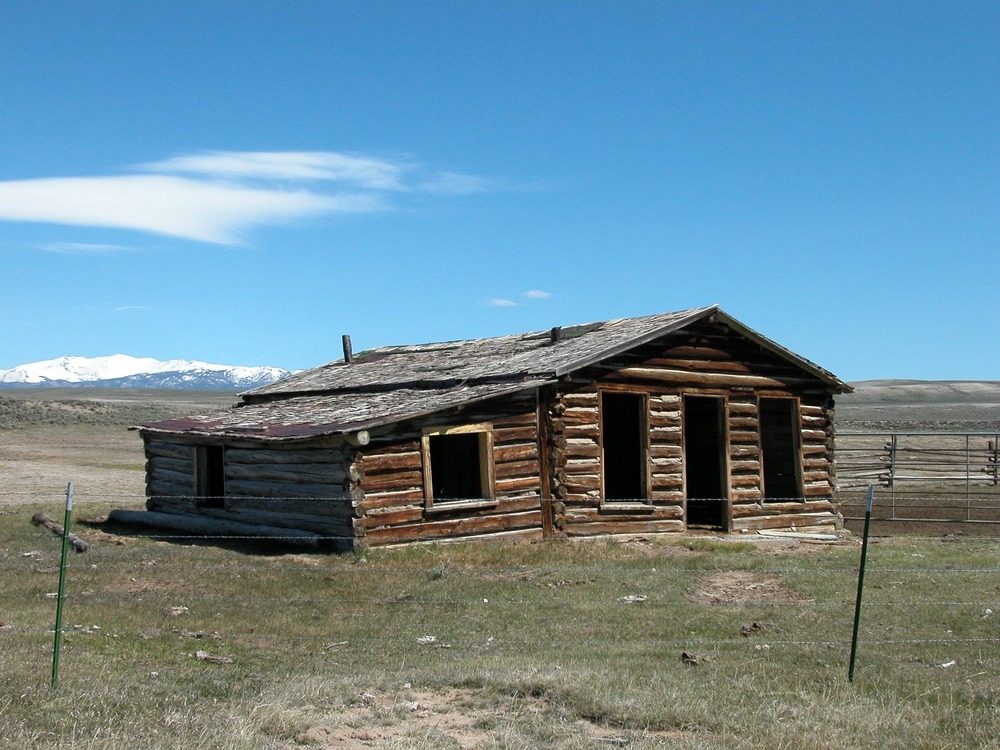
Retracing The Pony Express
One hundred and fifty years later, you can visit trail traces, visitor centers, museums, hiking trails, historic structures and forts related to the Pony Express National Historic Trail.
The trail crosses eight states following the journey taken by dozens of young riders and hundreds of horses between St. Joseph, Missouri and Sacramento, California.
The best news of all, however, is that you won’t have to change horses every ten miles. There are auto tour routes, GIS interactive maps and a Back-Country Byway.
Or, you can simply use your cellphone (there’s an app for every thing these days!) to chart a course across the Pony Express National Historic Trail. Isn’t progress wonderful!
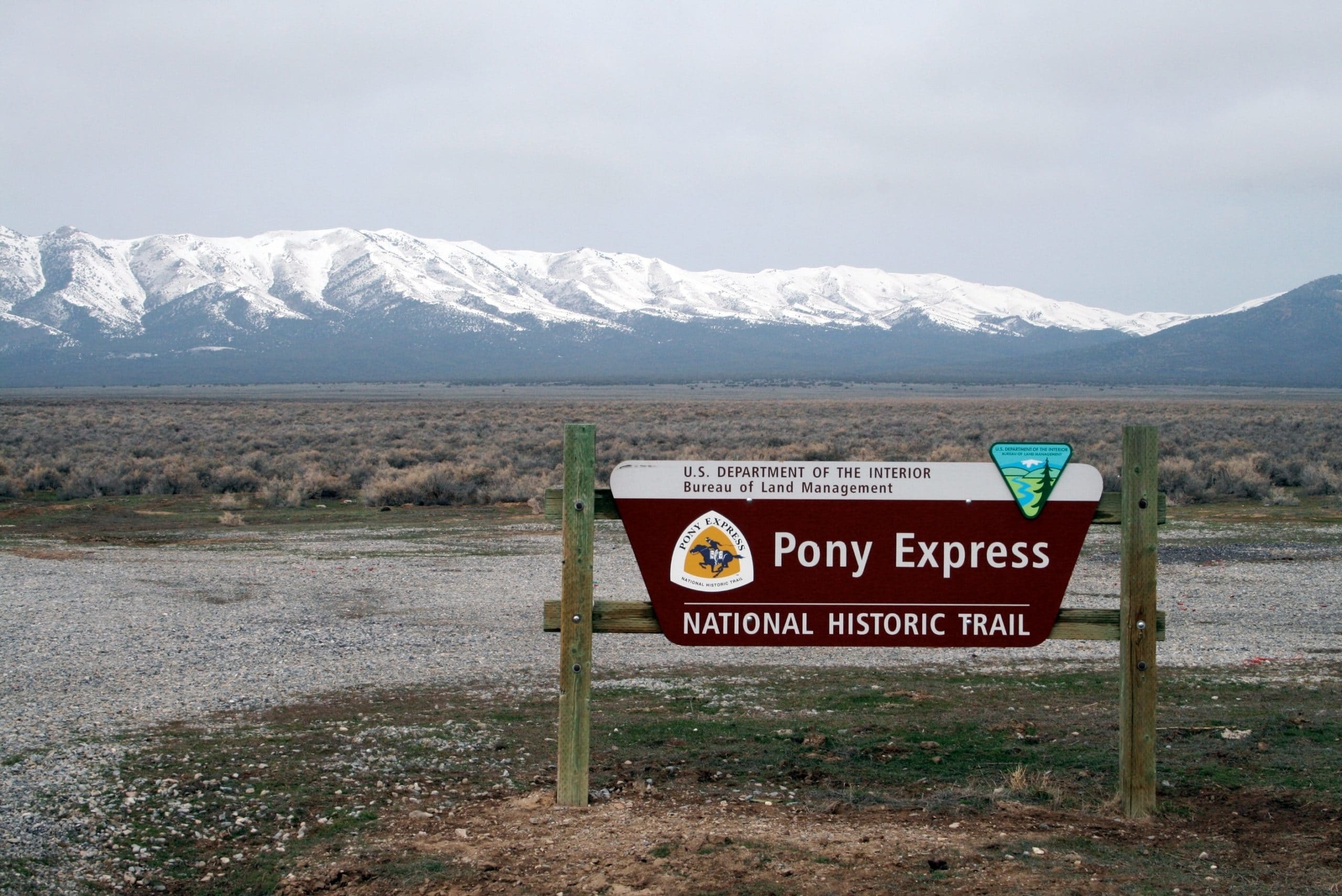
Wyoming National Parks FAQ
Wyoming is known for its rich aboriginal folklore, beautiful nature, and stunning National Parks including Yellowstone and Grand Teton. The state’s population density is among the lowest in the nation. Wyoming is famous for bull riding, cowboy culture, and the home to several of the world’s most magnificent rangelands.
The following is a list of must-see historic sites in Wyoming:
Grand Teton National Park
Yellowstone National Park
Fort Laramie National Historic Site
Heart Mountain Relocation Center
Fort Bridger
Oregon Trail Ruts
Independence Rock
Quebec 01 Missile Alert Facility
Connor Battlefield
Fort Phil Kearny
Ames Monument
Legend Rock State Petroglyph Site
Piedmont Charcoal Kilns
Wyoming Pioneer Memorial Museum
Historic Governors’ Mansion
Why Trust Us About Wyoming National Parks?
We’re Jim Pattiz and Will Pattiz, collectively known as the Pattiz Brothers (and sometimes the Parks Brothers) and we absolutely LOVE the national parks.
You should probably know that we don’t just make this stuff up out of thin air. We’ve spent our entire adult lives exploring and filming America’s national parks and public lands.
We’ve worked with the National Park Service, the Department of Interior, USDA, and the U.S. Forest Service for years creating films on important places and issues. Our work has been featured in leading publications all over the world and even some people outside of our immediate family call us experts on the national parks.
Meet The Parks Brothers
Map Of Wyoming National Park Sites
wyoming national parks, wy national parks, national parks of wyoming, list of wyoming national parks, national parks in wyoming, national park in wyoming, wyoming parks, national parks wyoming, wyoming national parks, wy national parks, national parks of wyoming, list of wyoming national parks, national parks in wyoming, national park in wyoming, wyoming parks, national parks wyoming, wyoming national parks, wy national parks, national parks of wyoming, list of wyoming national parks, national parks in wyoming, national park in wyoming, wyoming parks, national parks wyoming, wyoming national parks, wy national parks, national parks of wyoming, list of wyoming national parks, national parks in wyoming, national park in wyoming, wyoming parks, national parks wyoming
List Of Wyoming National Parks
- Grand Teton National Park
- Yellowstone National Park
- Devils Tower National Monument
- Bighorn Canyon National Recreation Area
- California National Historic Trail
- Fort Laramie National Historic Site
- Fossil Butte National Monument
- Mormon Pioneer National Historic Trail
- Oregon National Historic Trail
- Pony Express National Historic Trail
We Hope You’ll Follow Our Journey

Our goal here at More Than Just Parks is to share the beauty of America’s national parks and public lands through stunning short films in an effort to get Americans and the world to see the true value in land conservation.
We hope you’ll follow our journey through the parks and help us to keep them the incredible places that they are. If you’re interested in joining the adventure then please sign up below!
Helpful Related Articles
Things to Do Yellowstone: 15 Best Things to Do Yellowstone National Park
The Lamar Valley: Lamar Valley: A Trip to Yellowstone’s Best Wildlife Viewing Spot
Yellowstone Facts: 10 Amazing Yellowstone National Park Facts
Best Airports Near Yellowstone: The Best Airports Near Yellowstone National Park
The Wyoming National Parks: 10 Epic Wyoming National Parks: The Complete Guide (+ Photos)
Mount Rushmore to Yellowstone: Driving Mount Rushmore to Yellowstone National Park Road Trip
Grand Teton Hikes: 18 Epic Grand Teton National Park Hikes (Photos + Guide)
Grand Teton Guide: Grand Teton National Park Ultimate Guide
Things to Do Grand Teton: 17 Epic Things to Do Grand Teton National Park
Grand Teton Maps: The Best Maps for Grand Teton National Park
wyoming national parks, wy national parks, national parks of wyoming, list of wyoming national parks, national parks in wyoming, national park in wyoming, wyoming parks, national parks wyoming, wyoming national parks, wy national parks, national parks of wyoming, list of wyoming national parks, national parks in wyoming, national park in wyoming, wyoming parks, national parks wyoming, wyoming national parks, wy national parks, national parks of wyoming, list of wyoming national parks, national parks in wyoming, national park in wyoming, wyoming parks, national parks wyoming, wyoming national parks, wy national parks, national parks of wyoming, list of wyoming national parks, national parks in wyoming, national park in wyoming, wyoming parks, national parks wyoming,

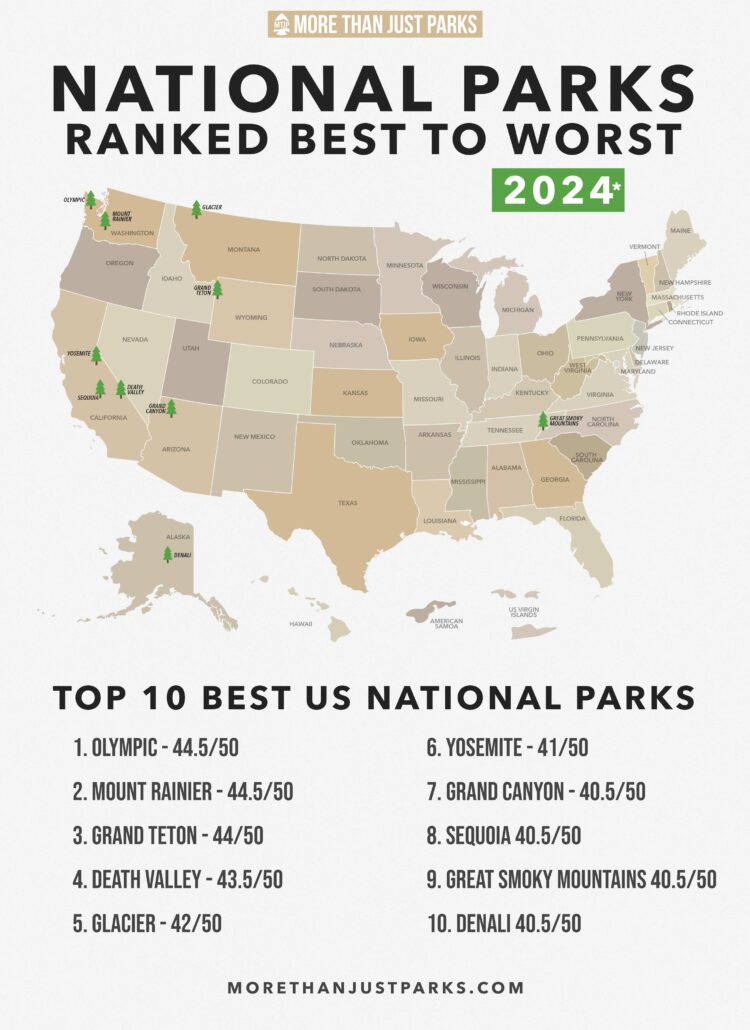
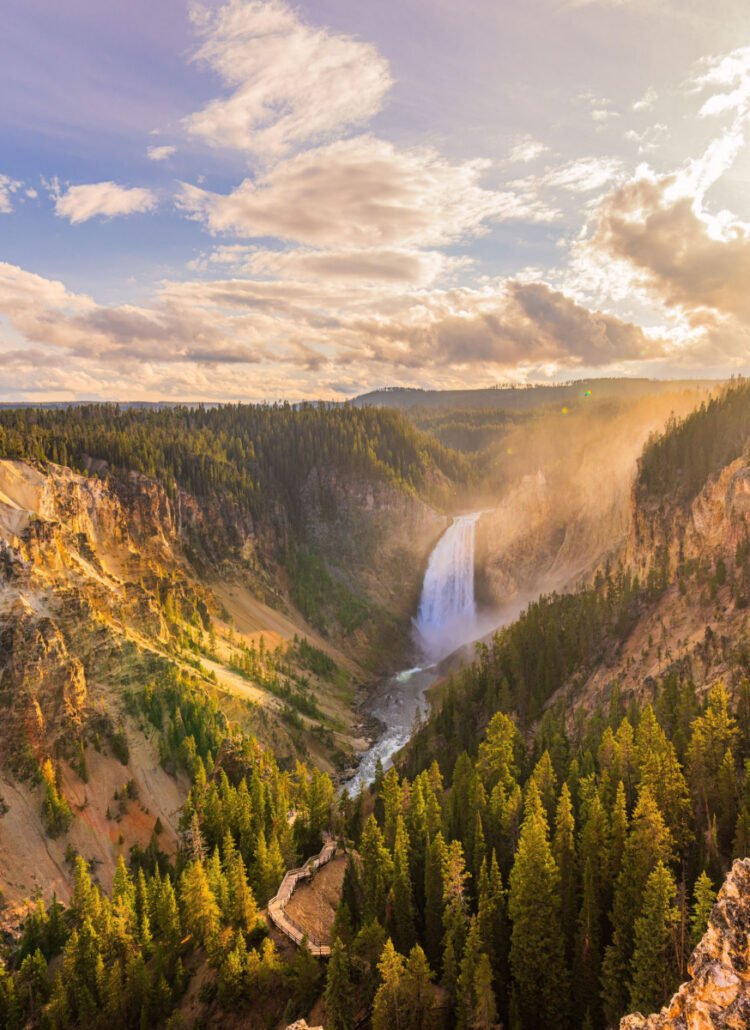
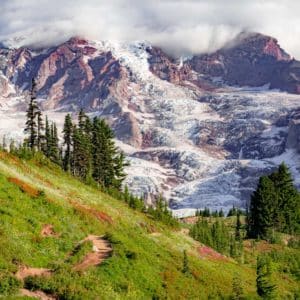

Leave a Reply